
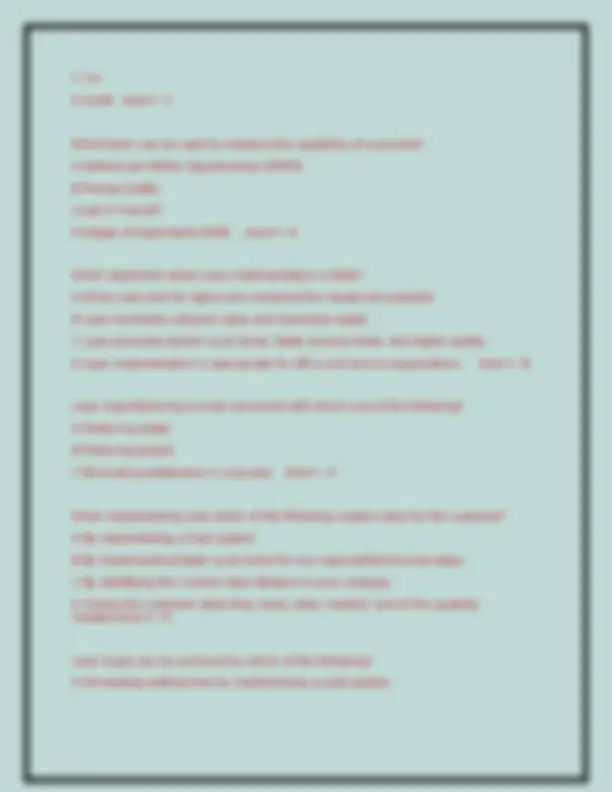
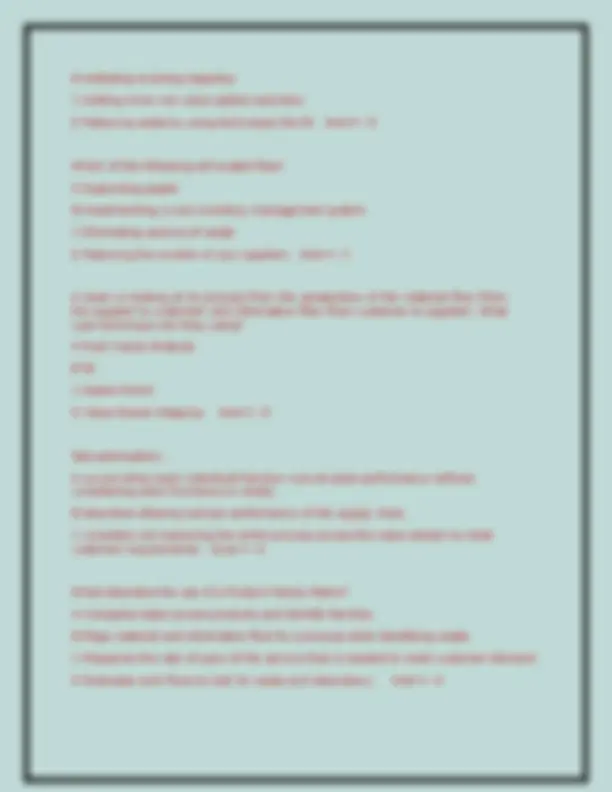
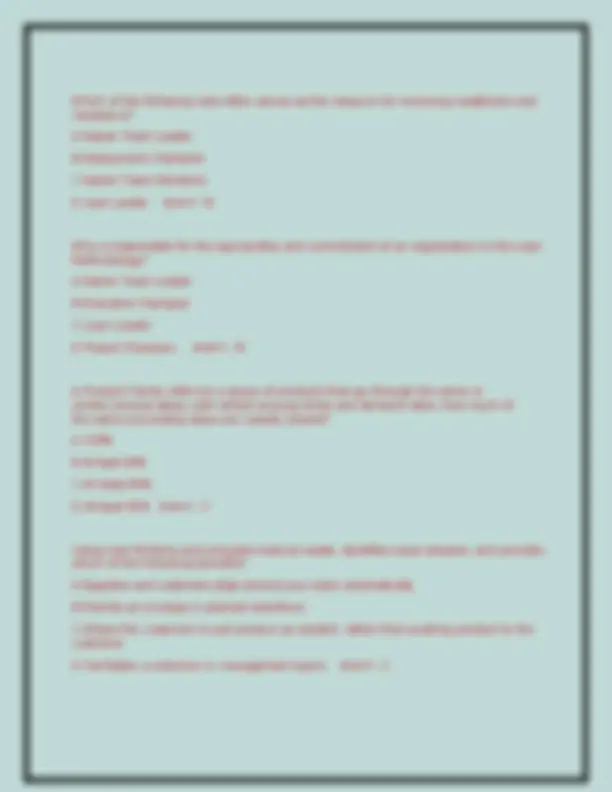
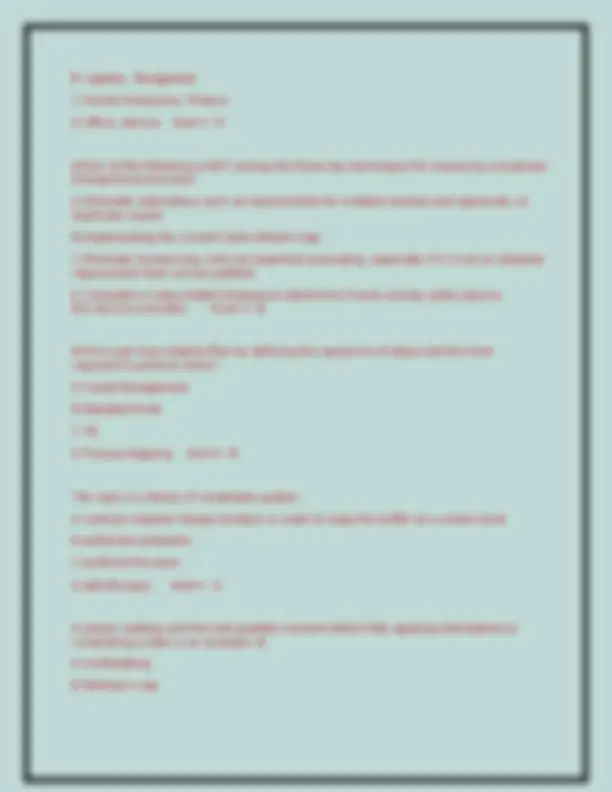
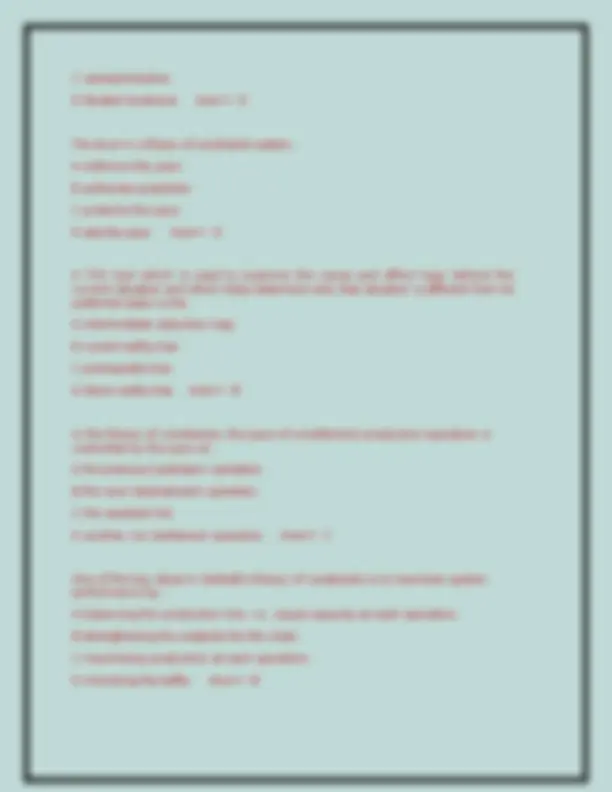
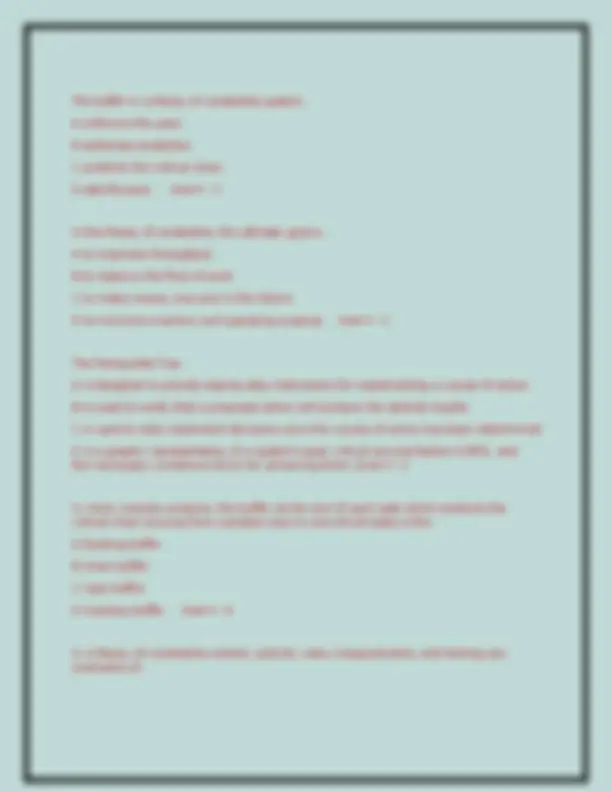
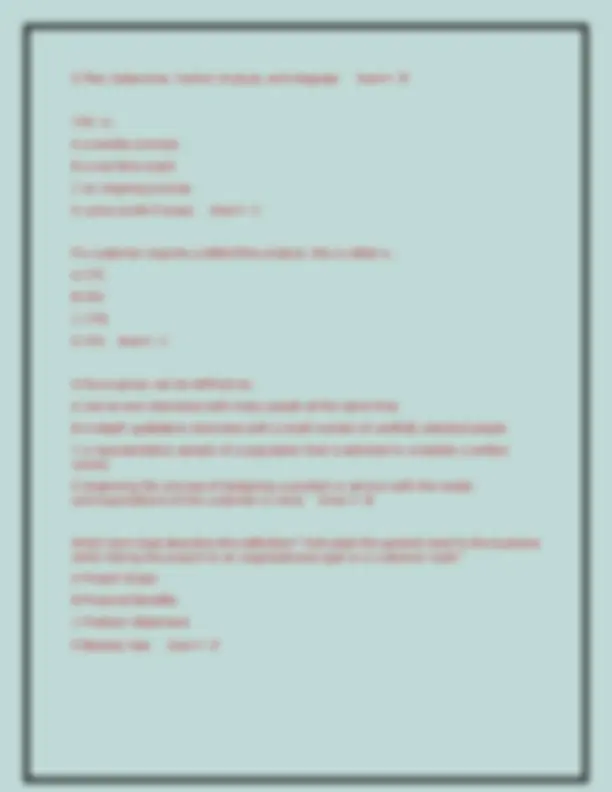
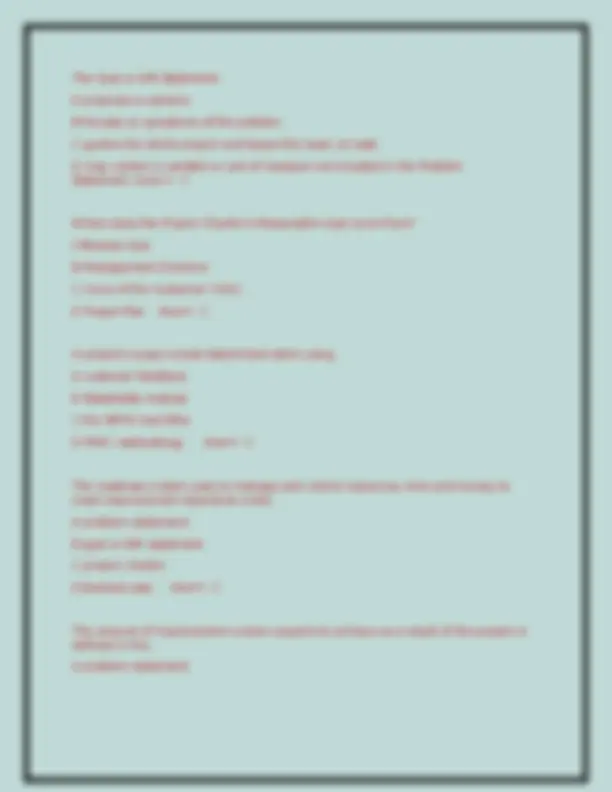
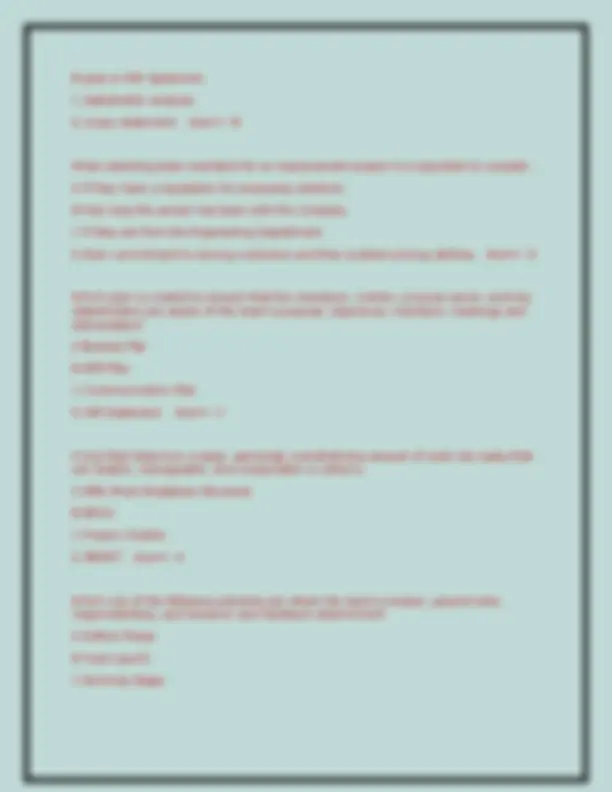
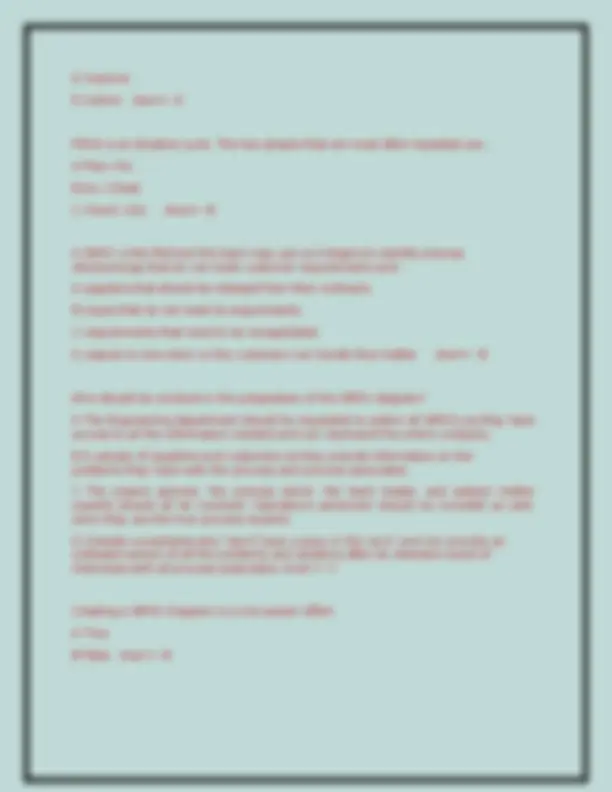
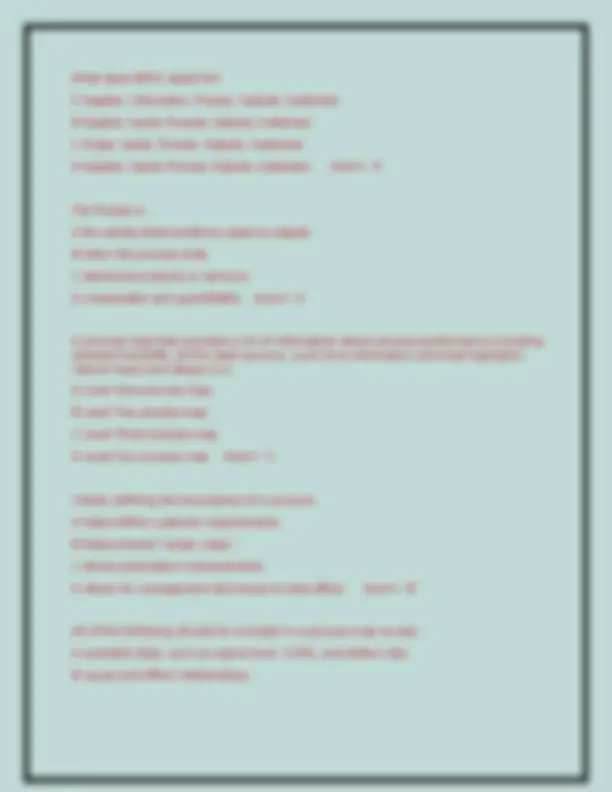
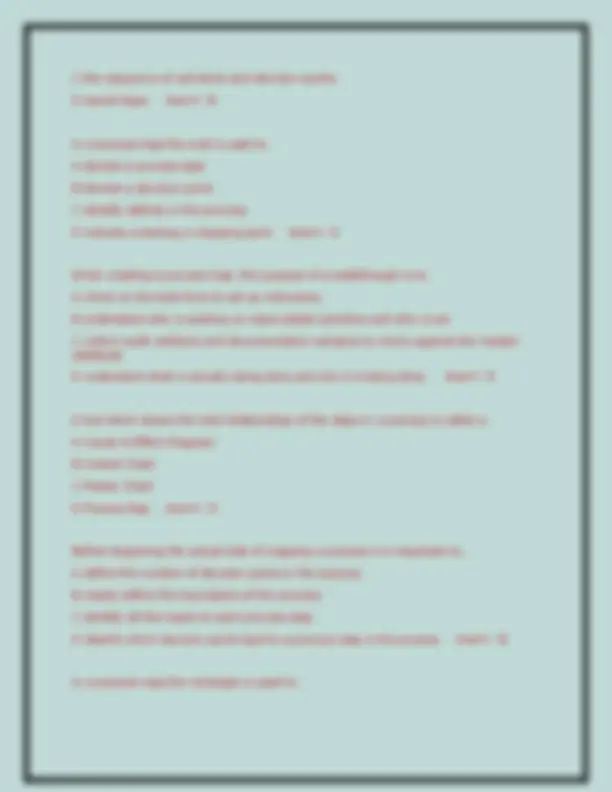
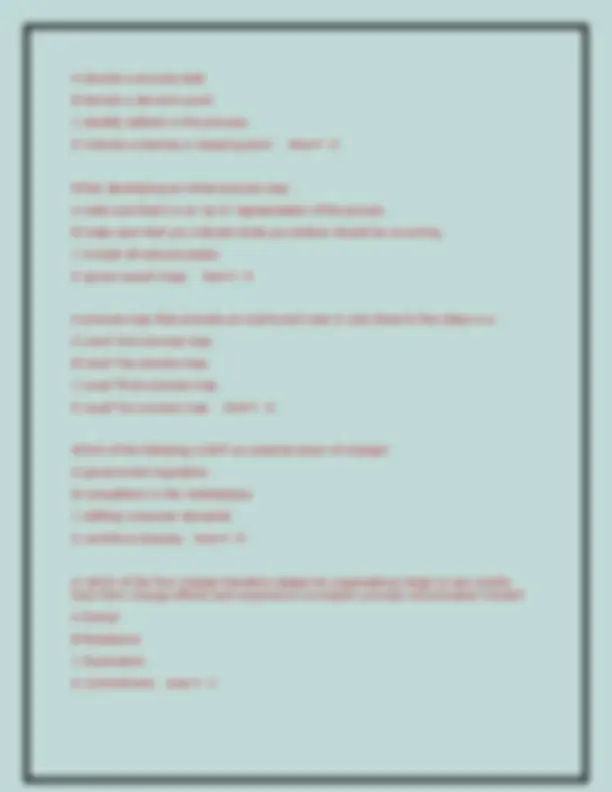
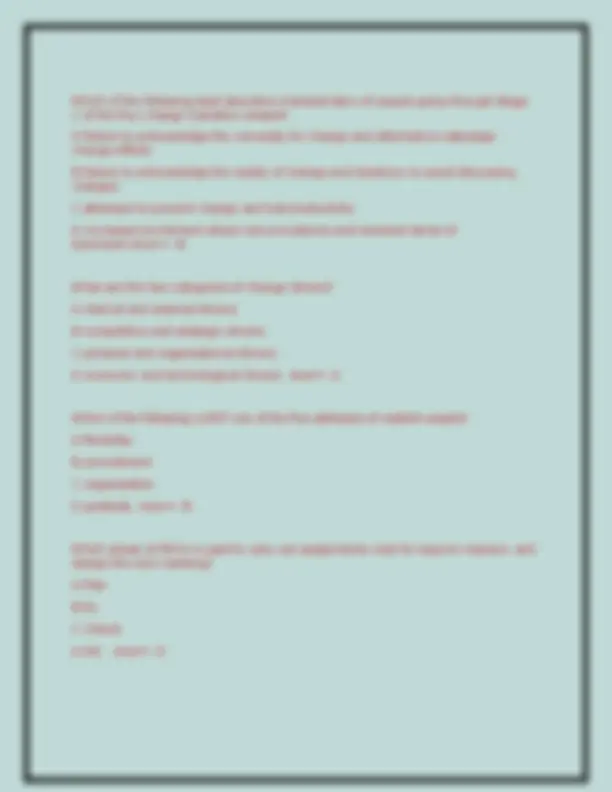
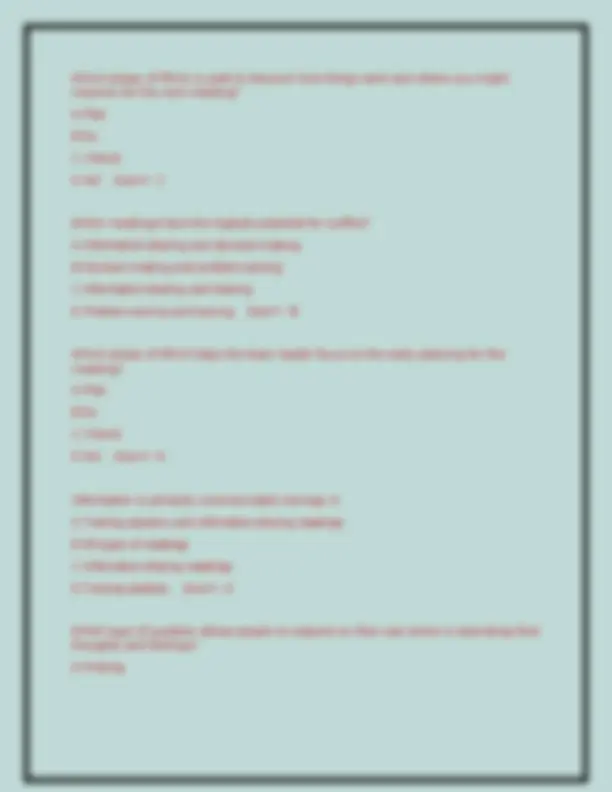
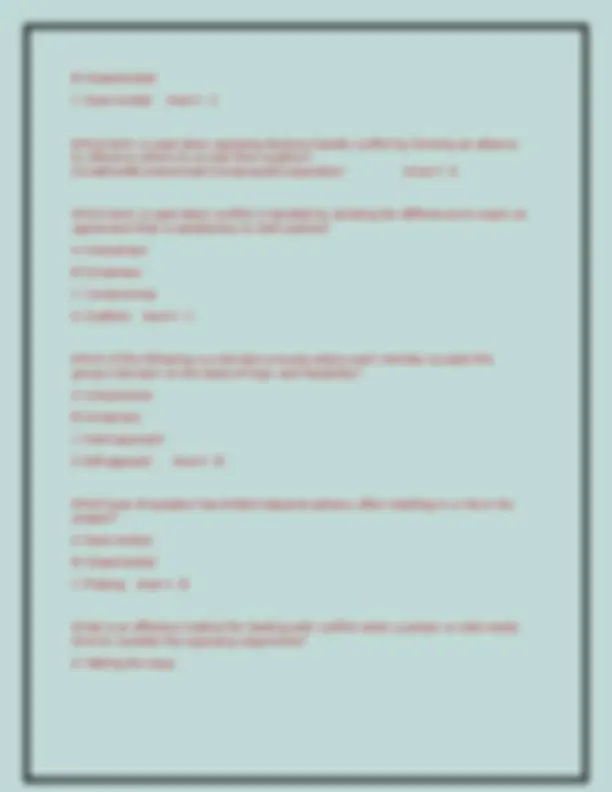
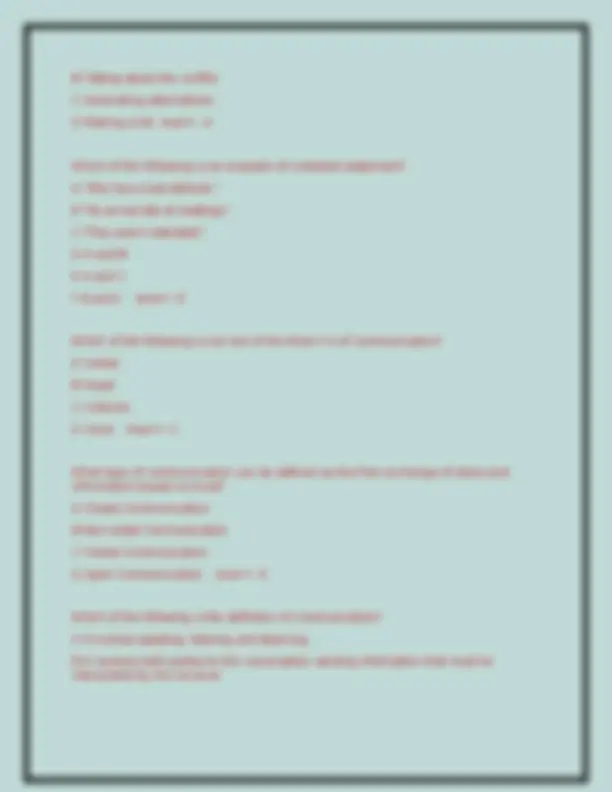
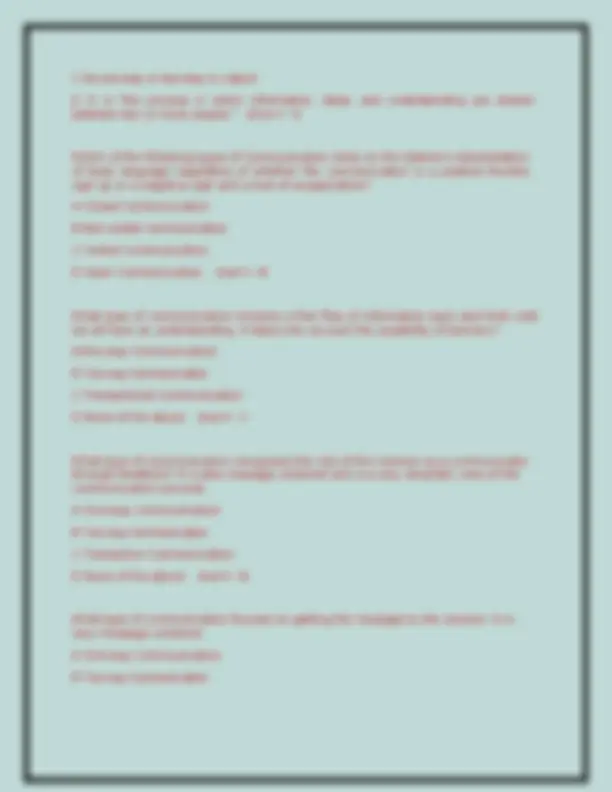
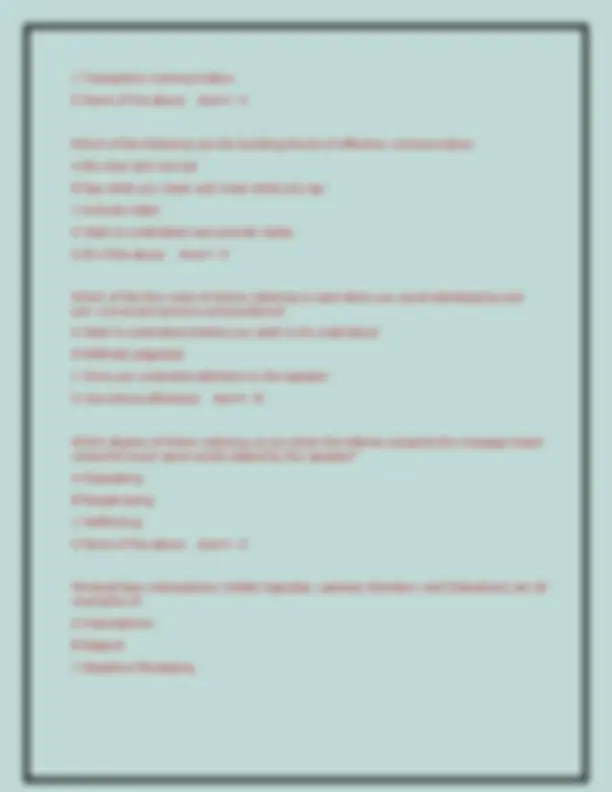
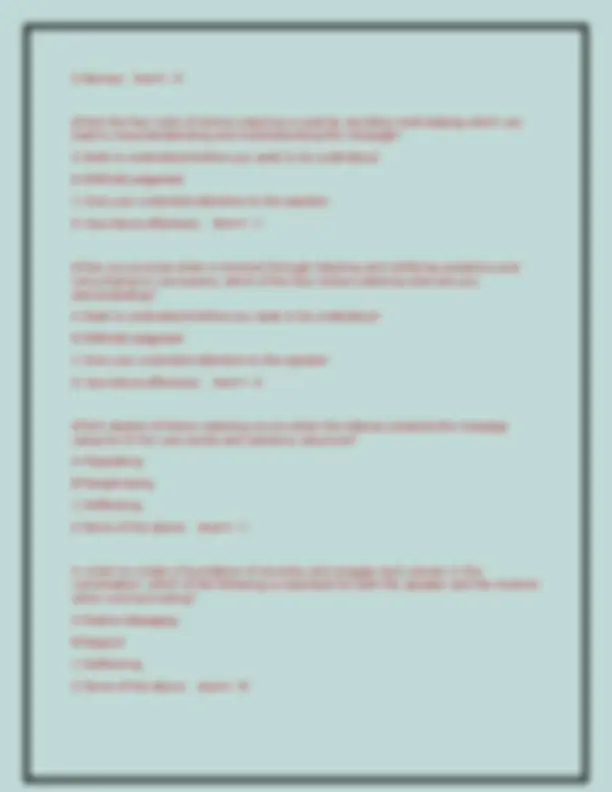
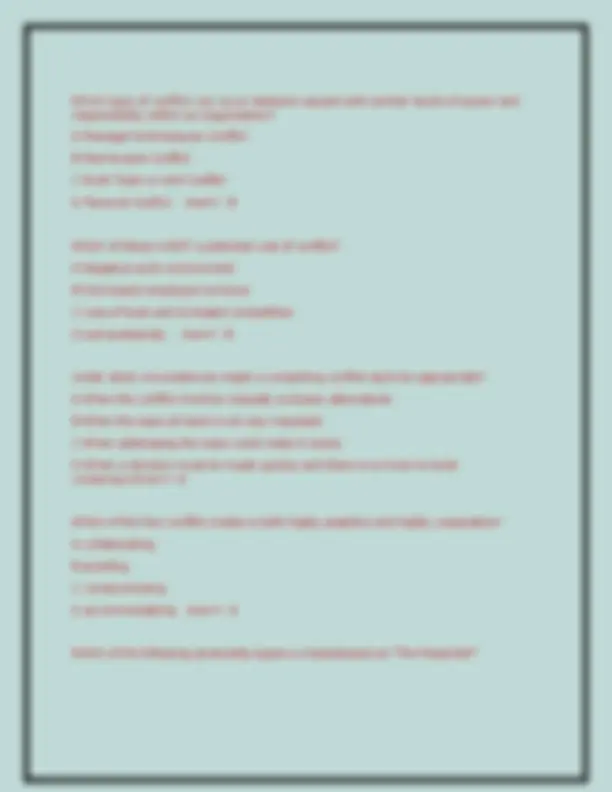
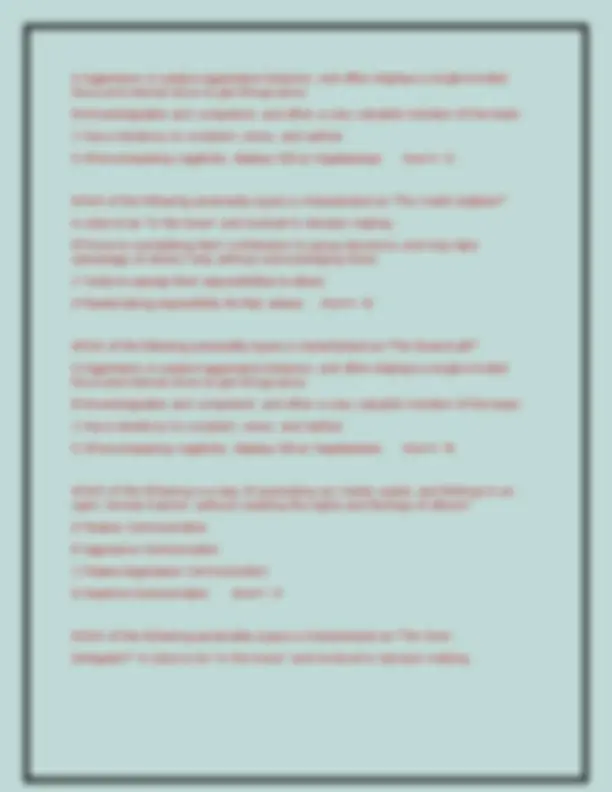
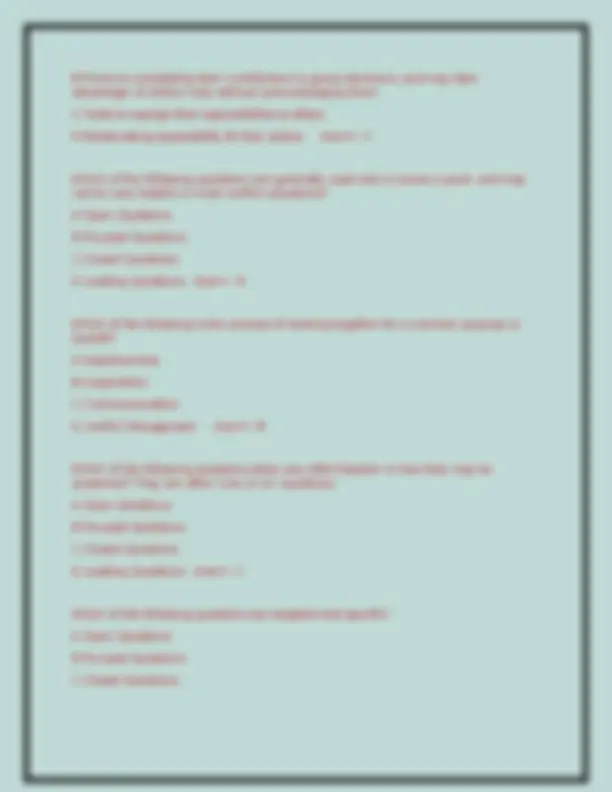
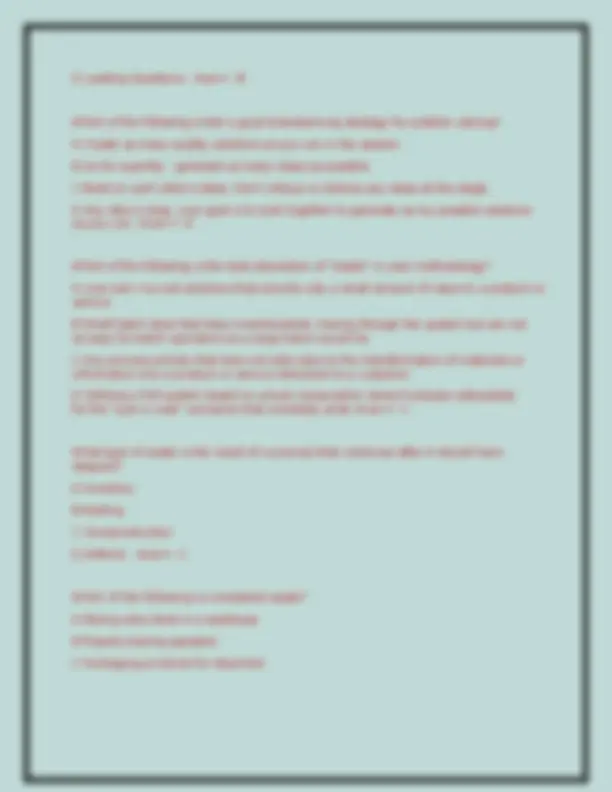
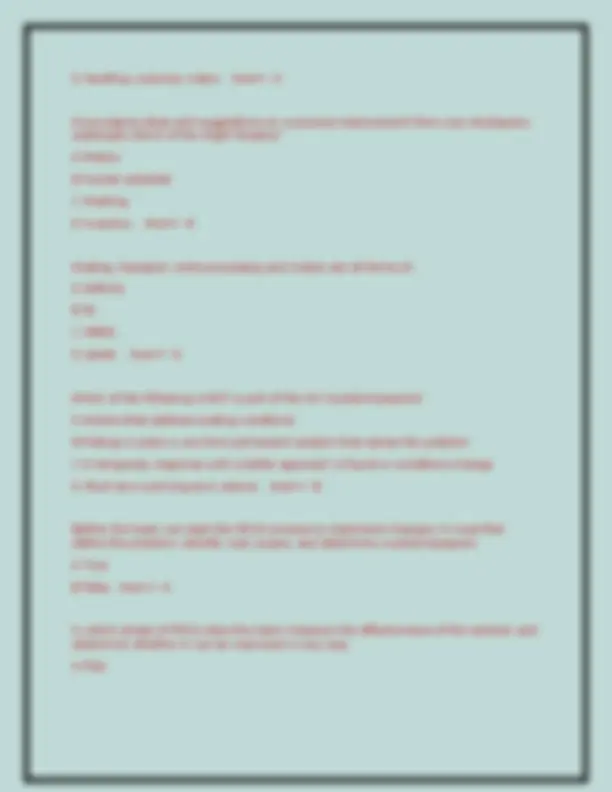
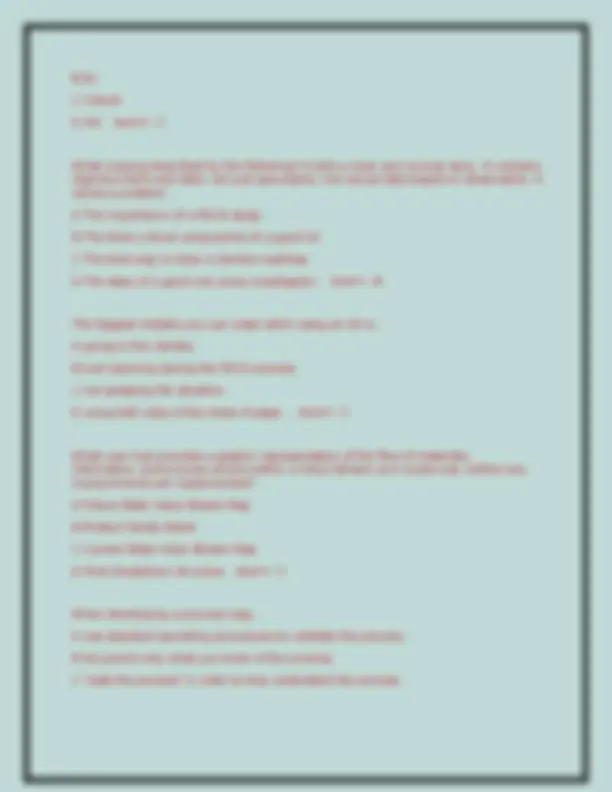
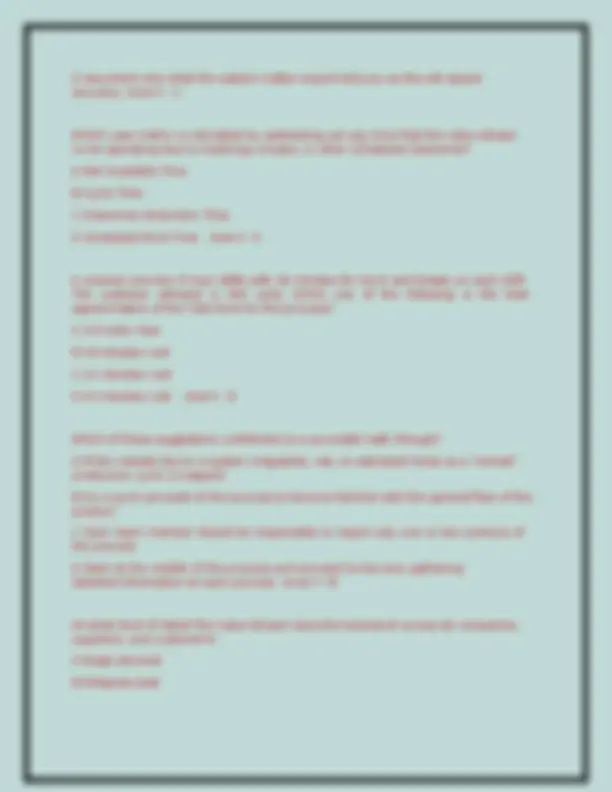
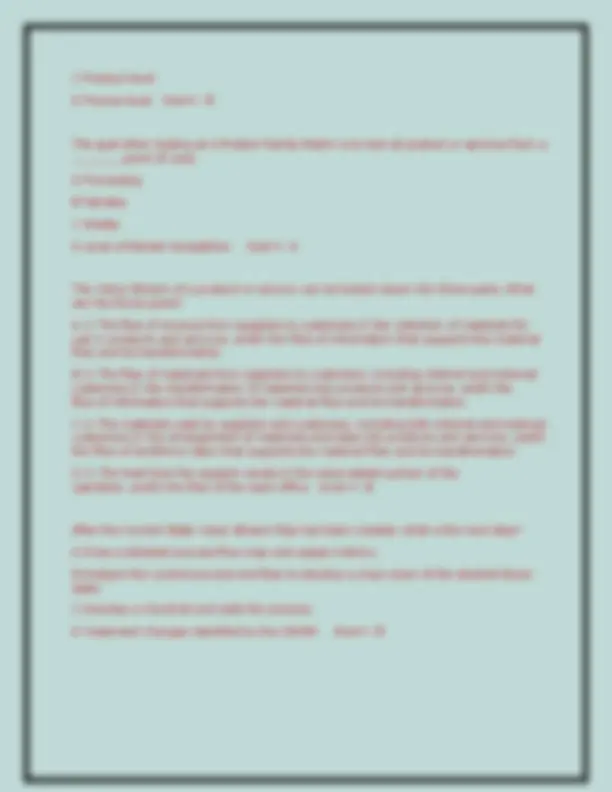
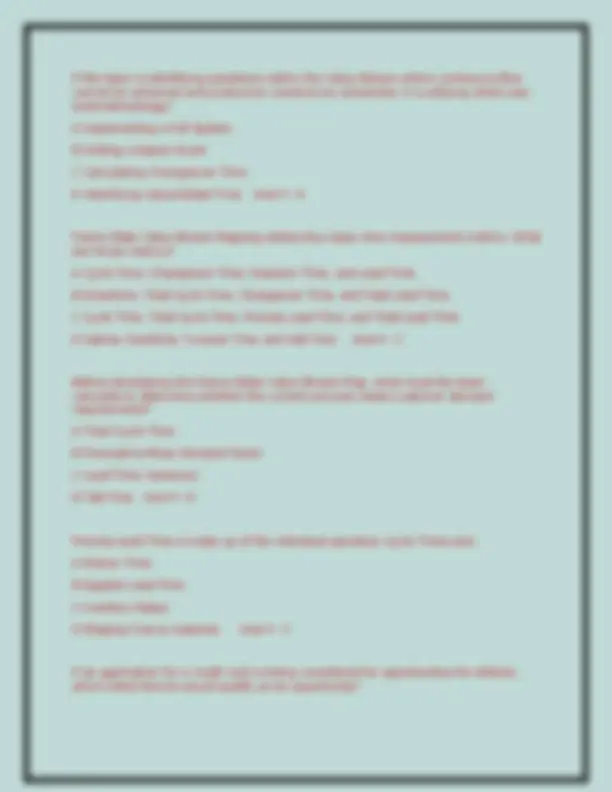
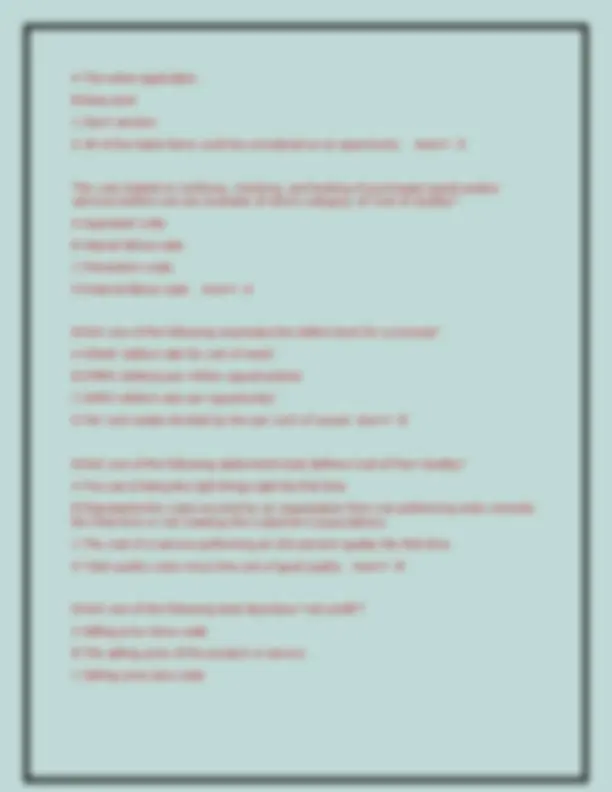
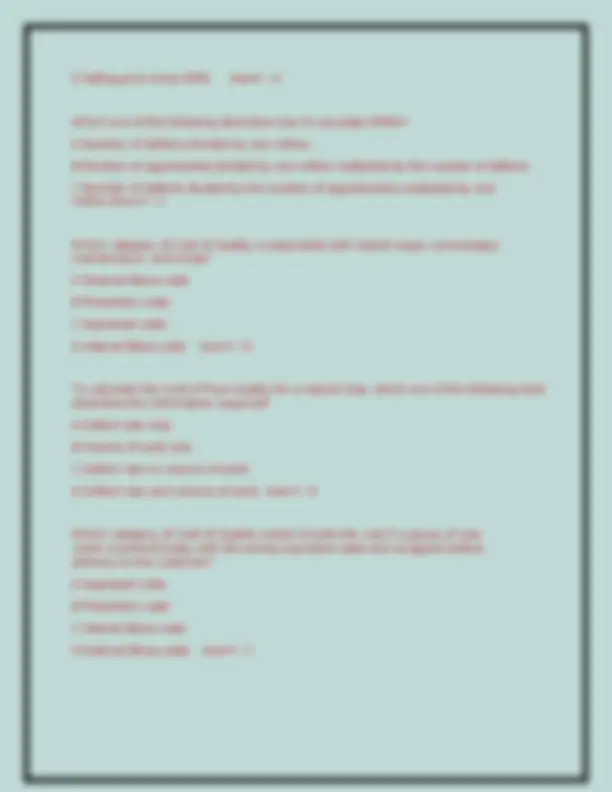
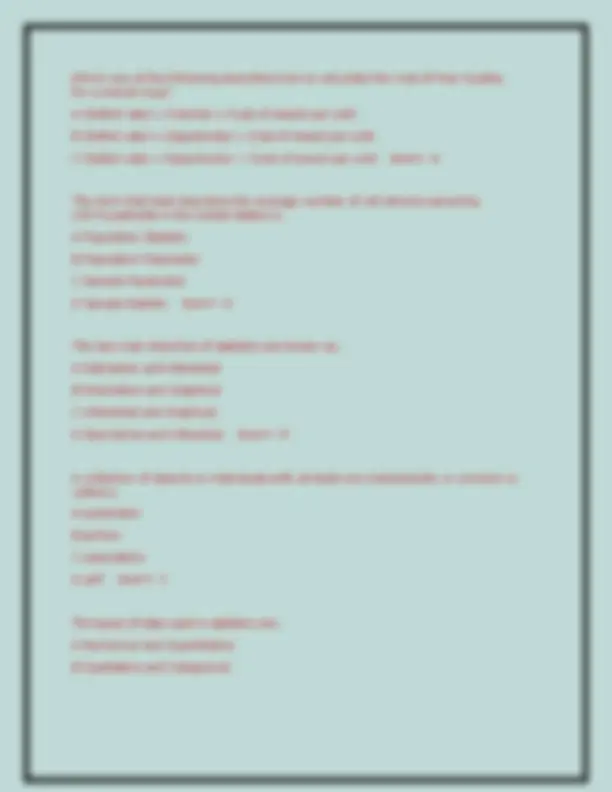
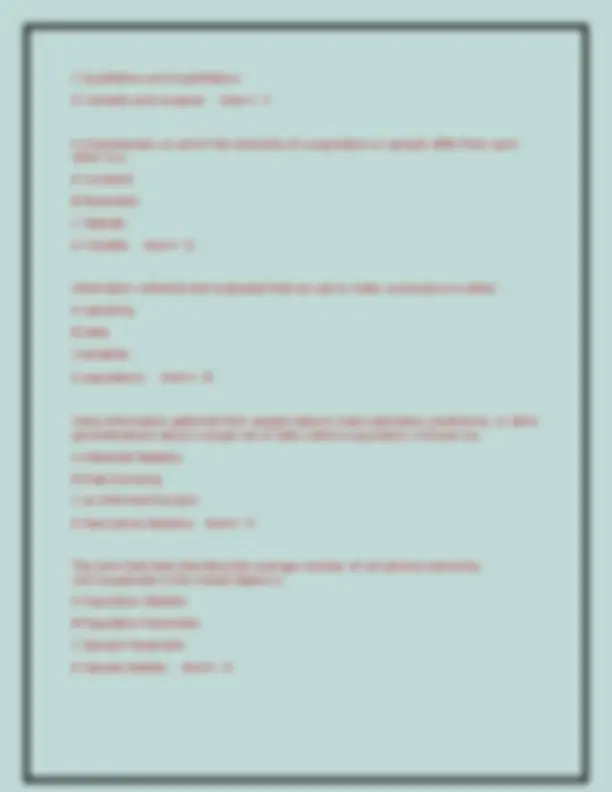
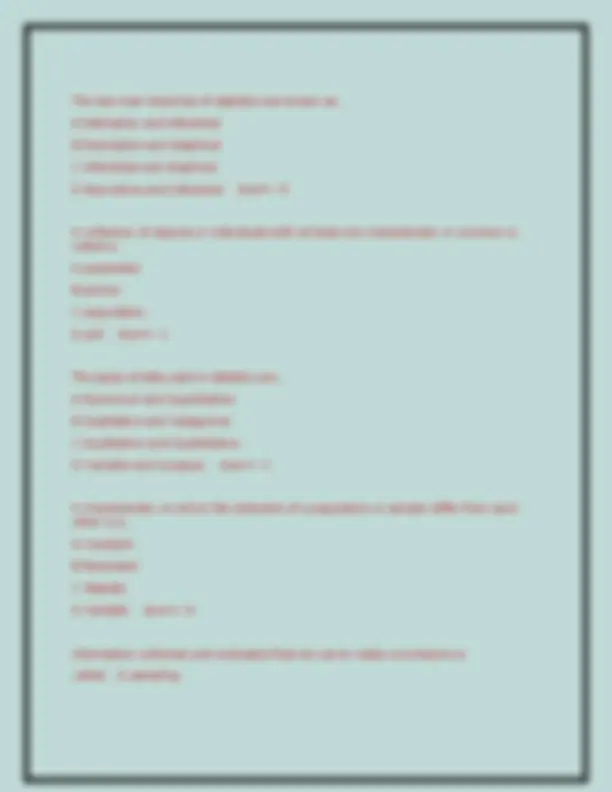
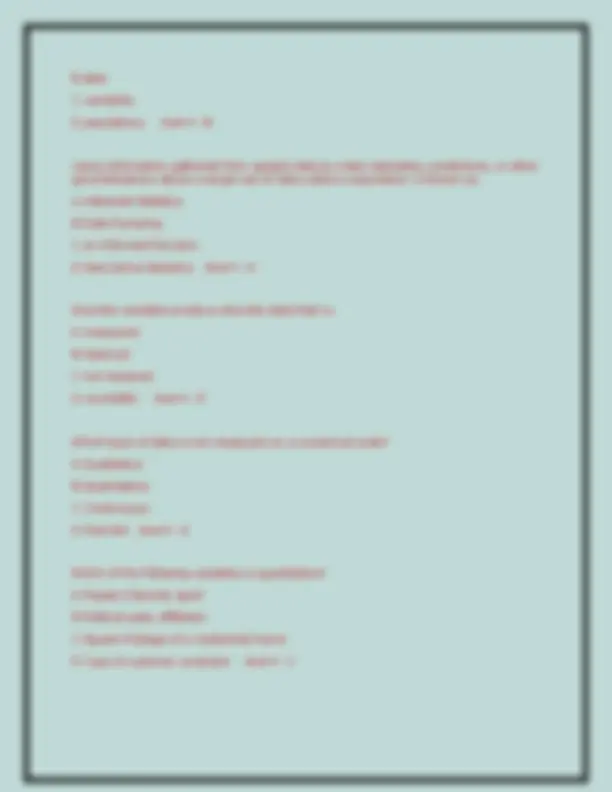

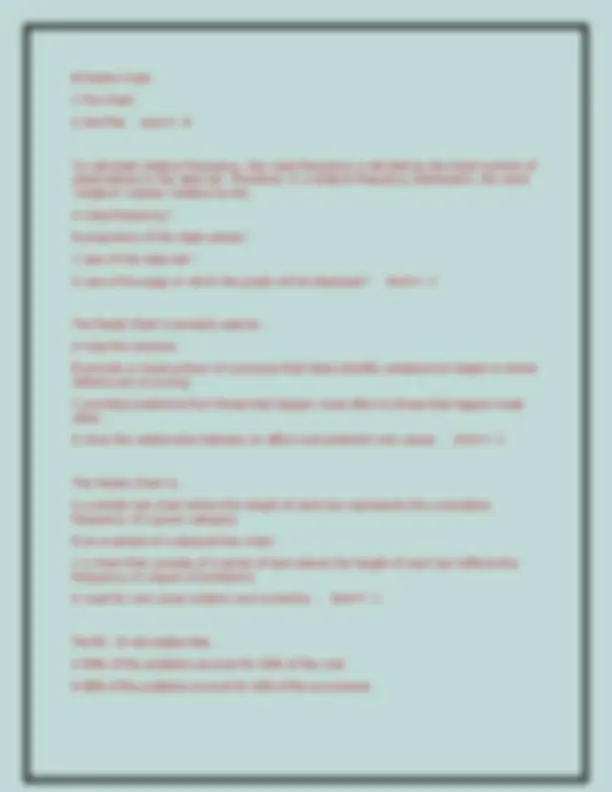
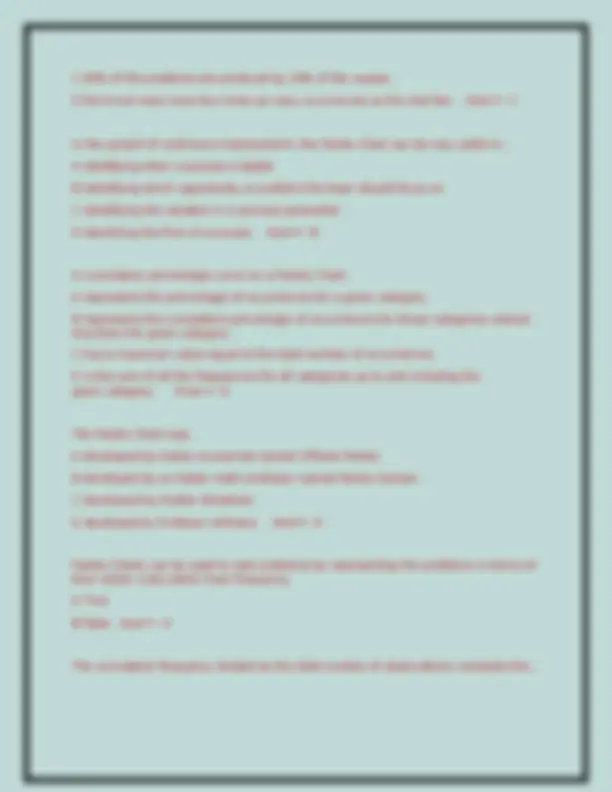
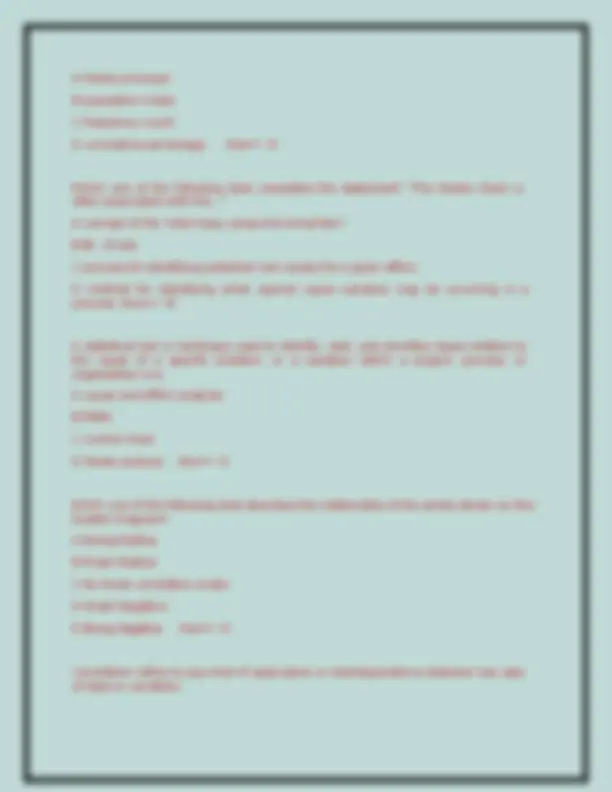
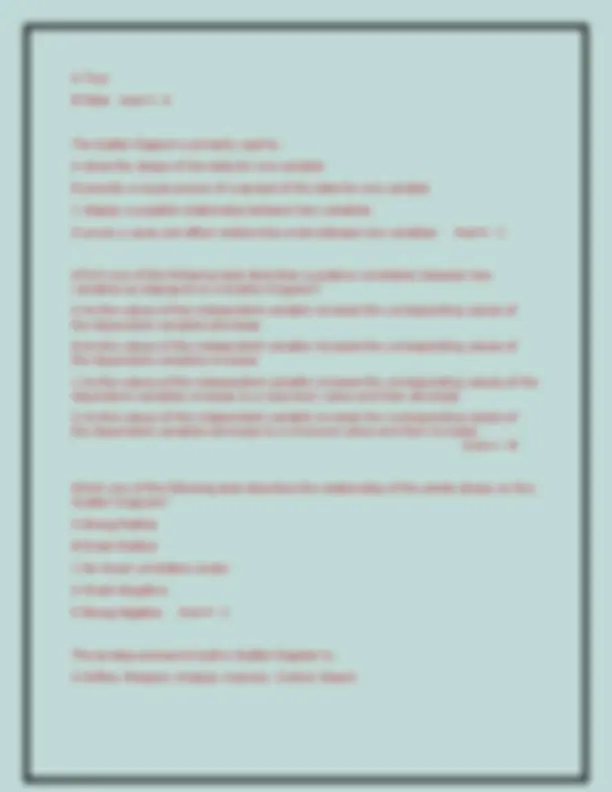
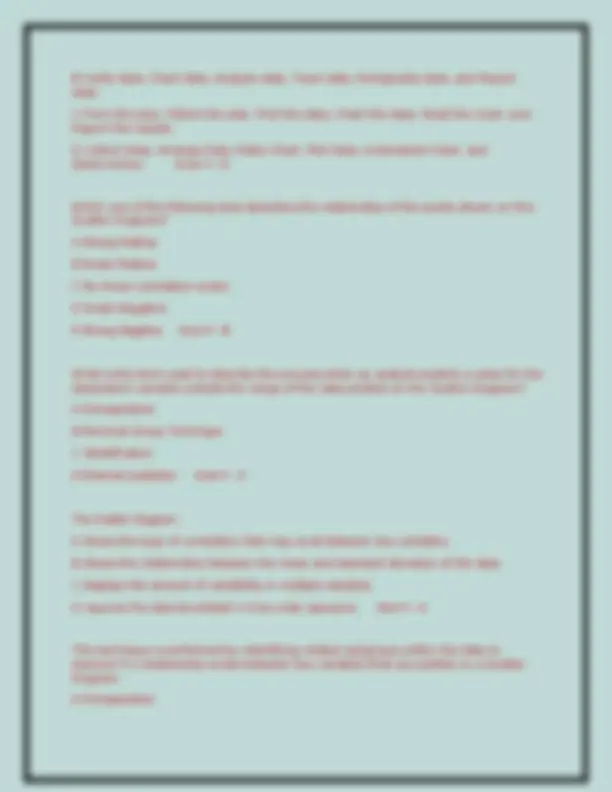
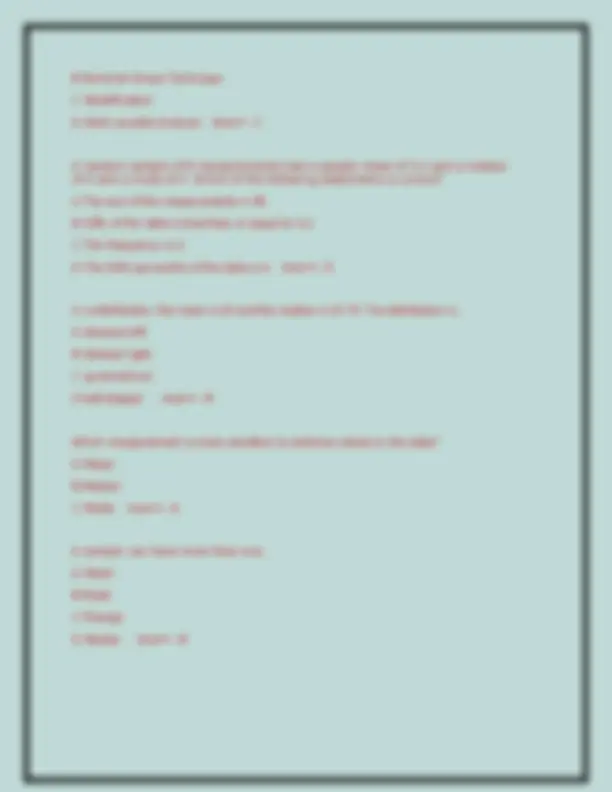
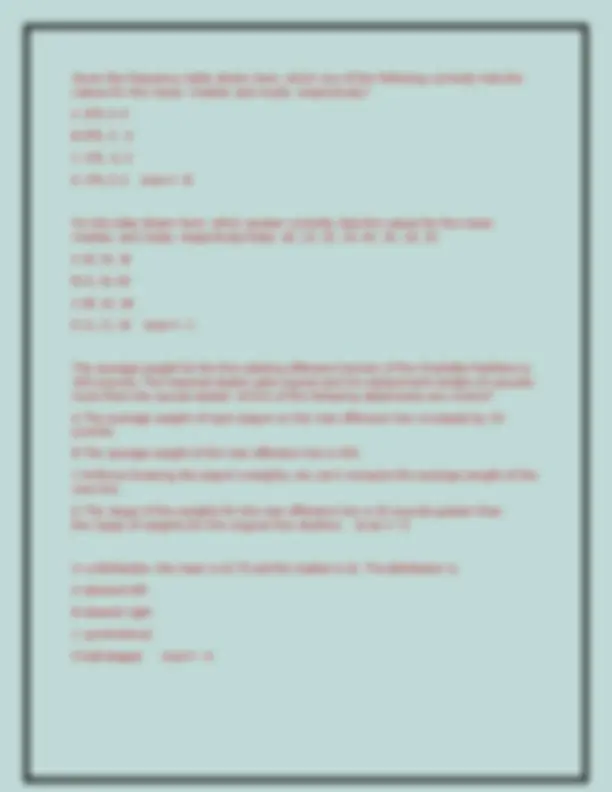
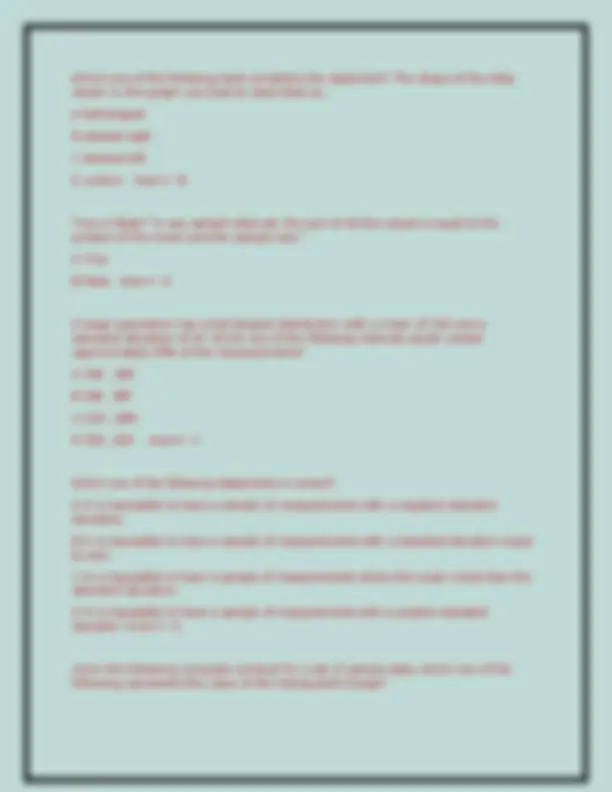
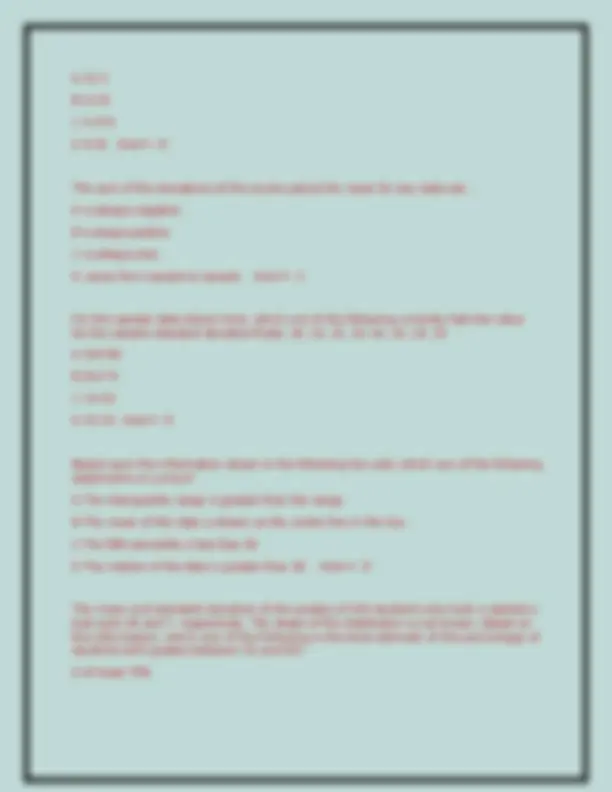
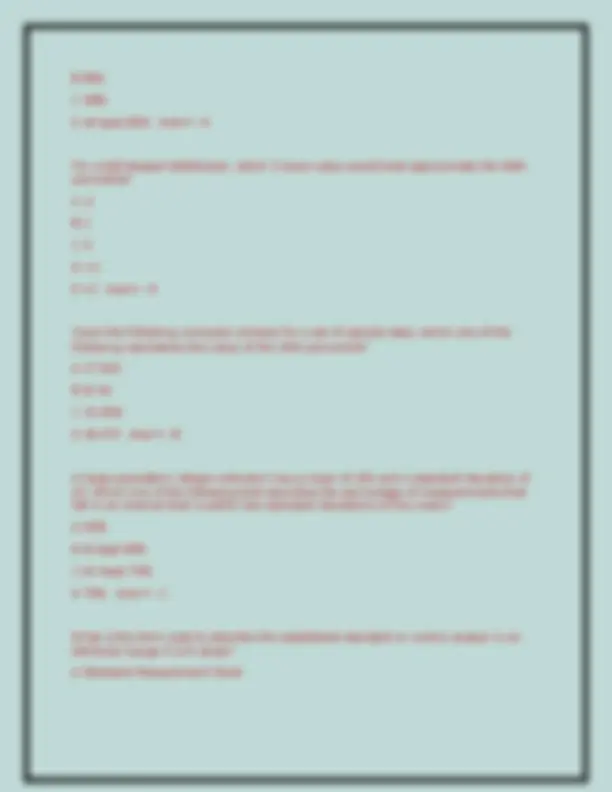
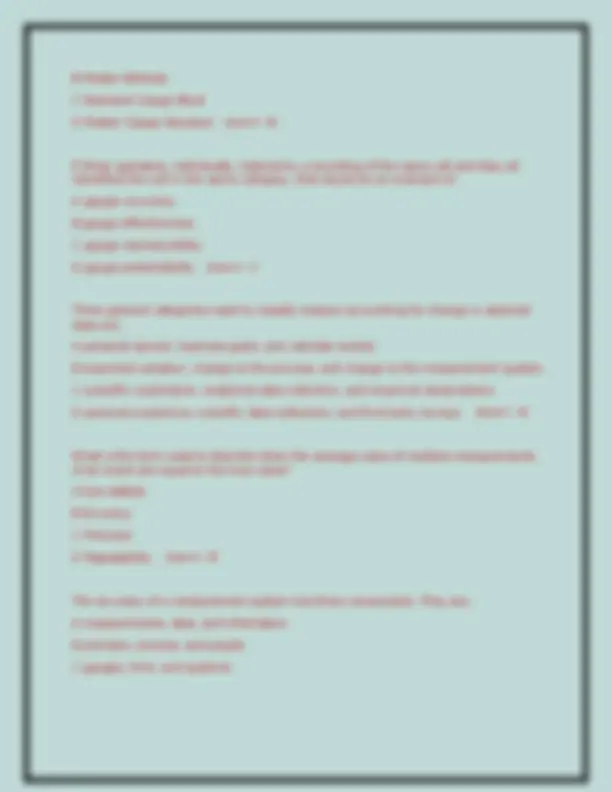
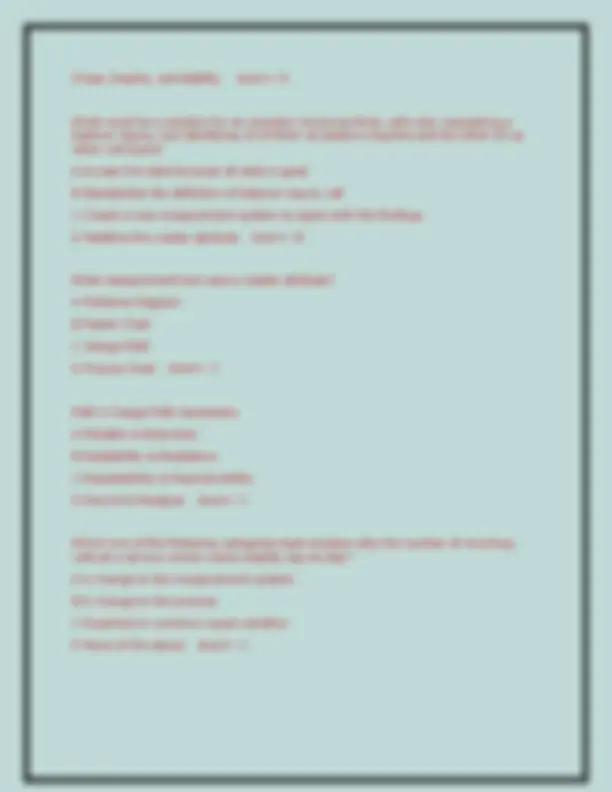
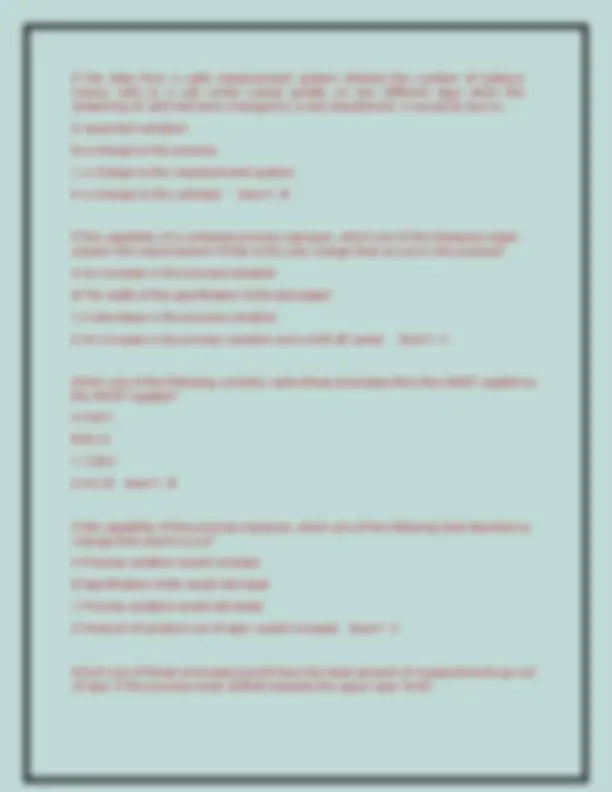
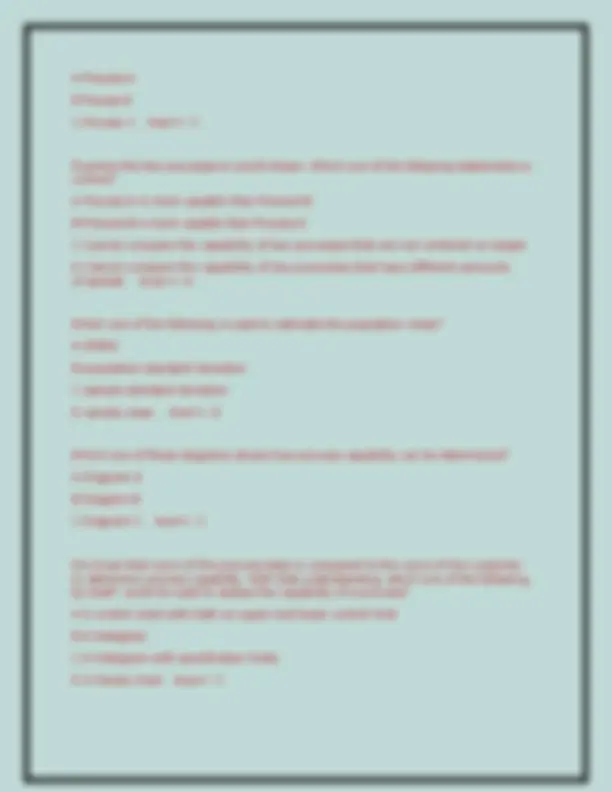
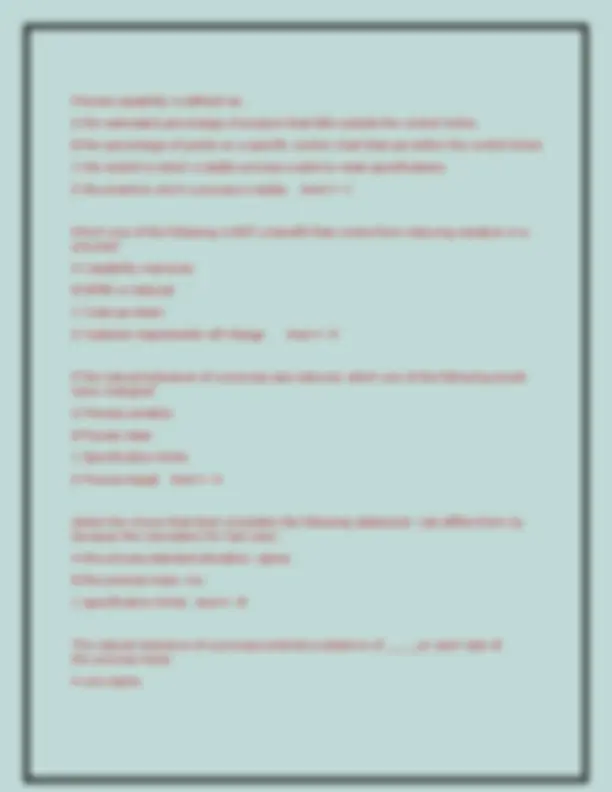
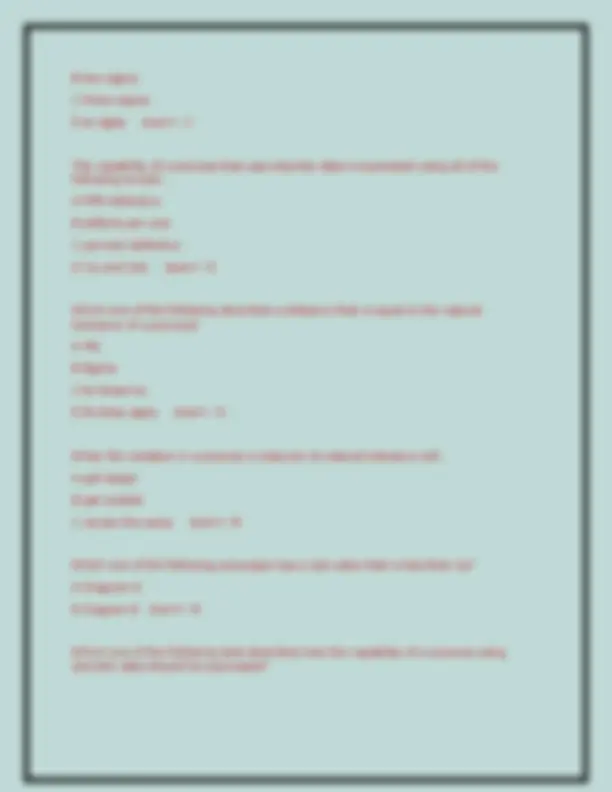
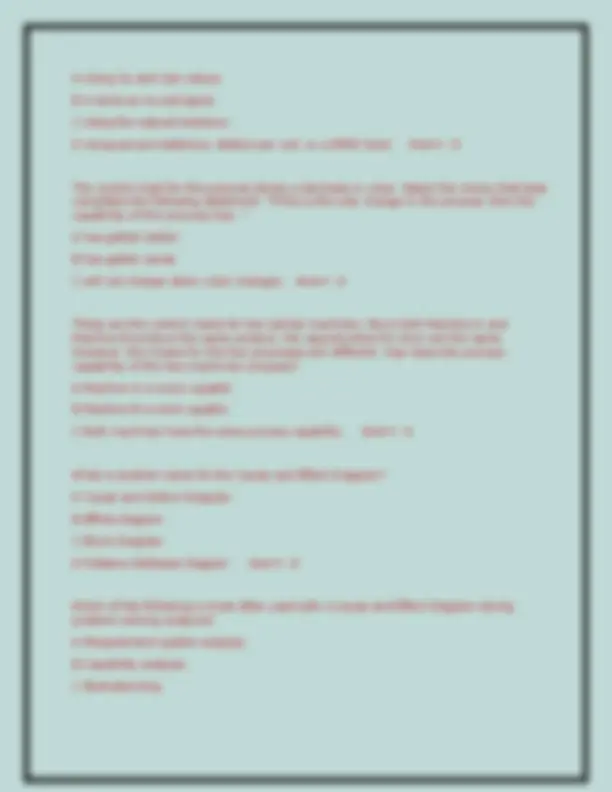

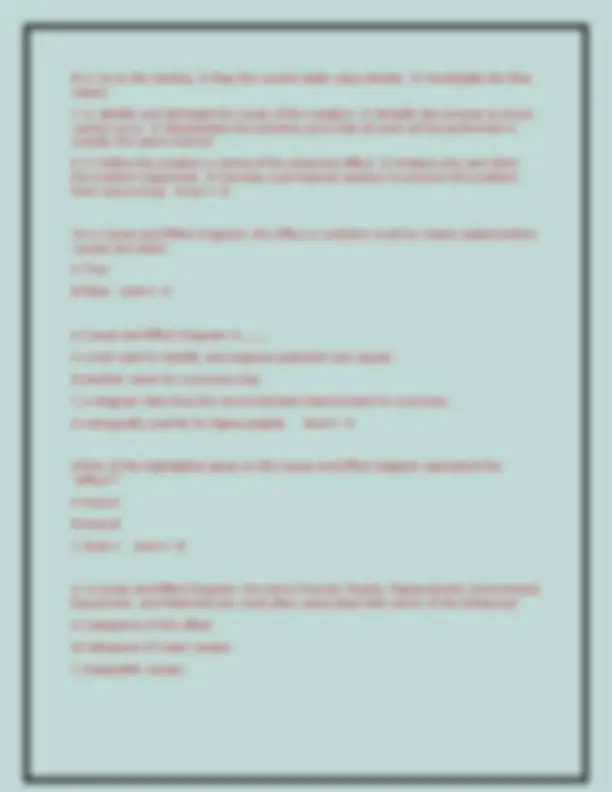
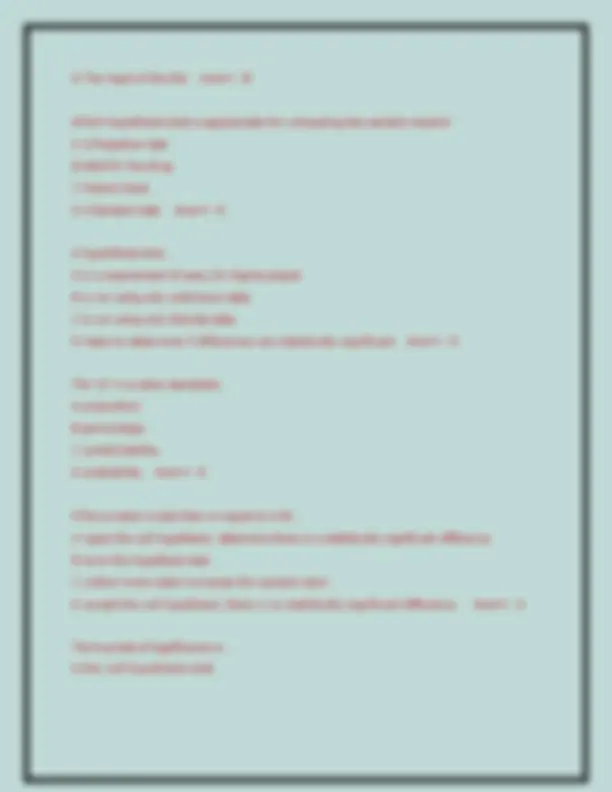
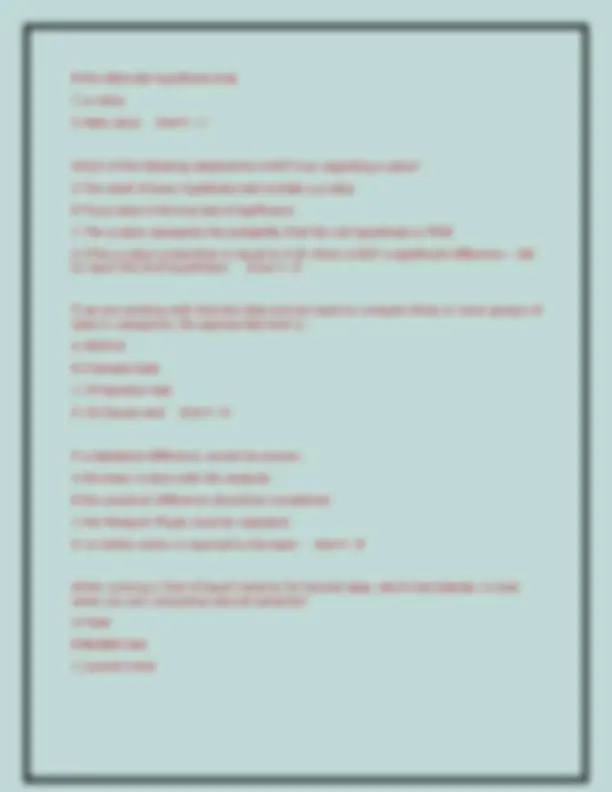
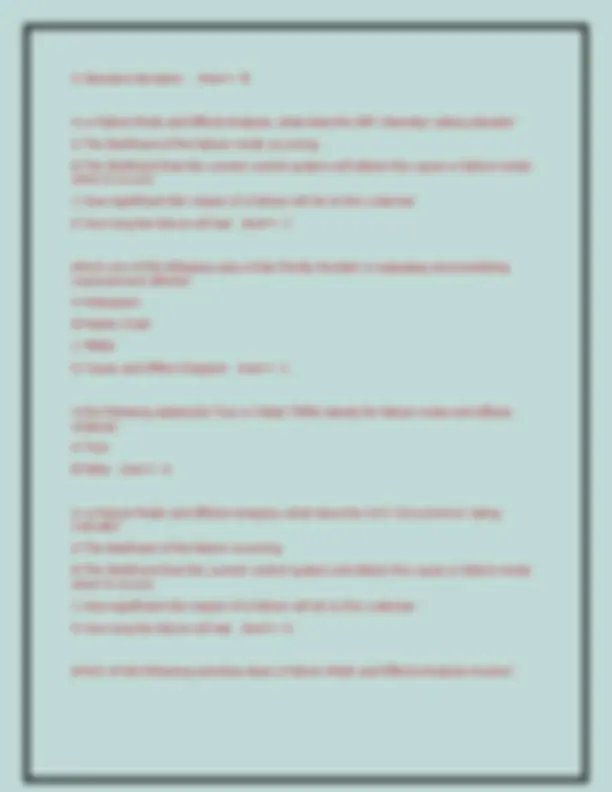
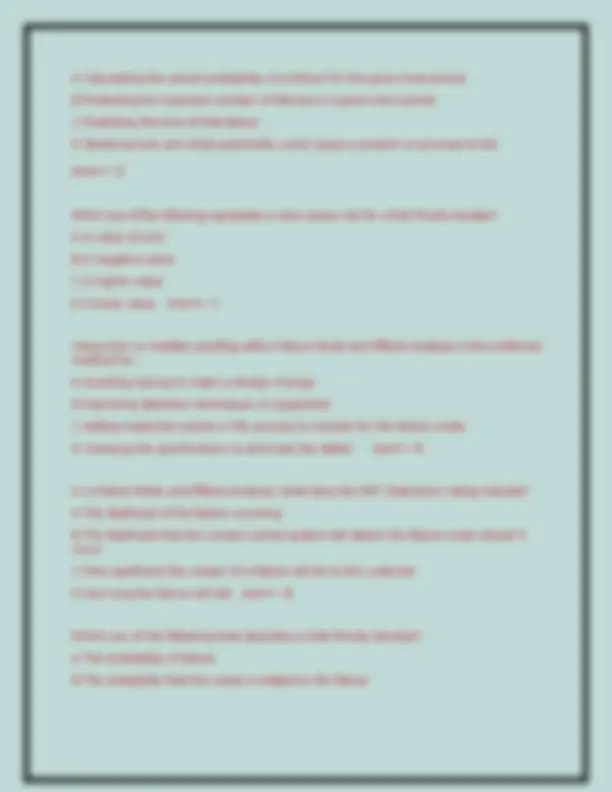
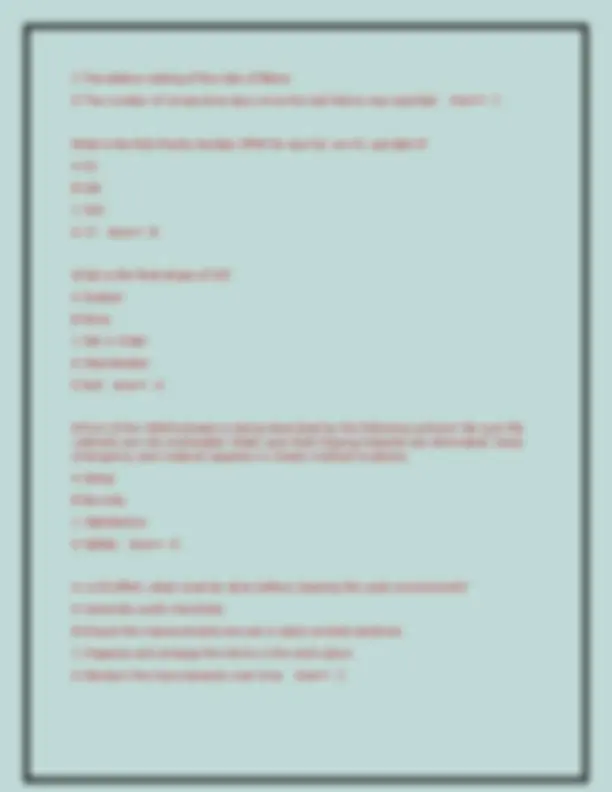
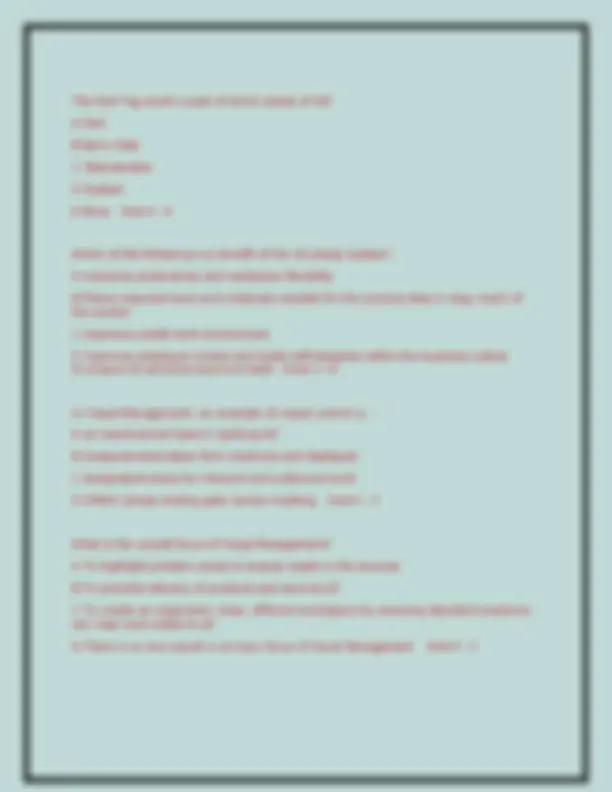
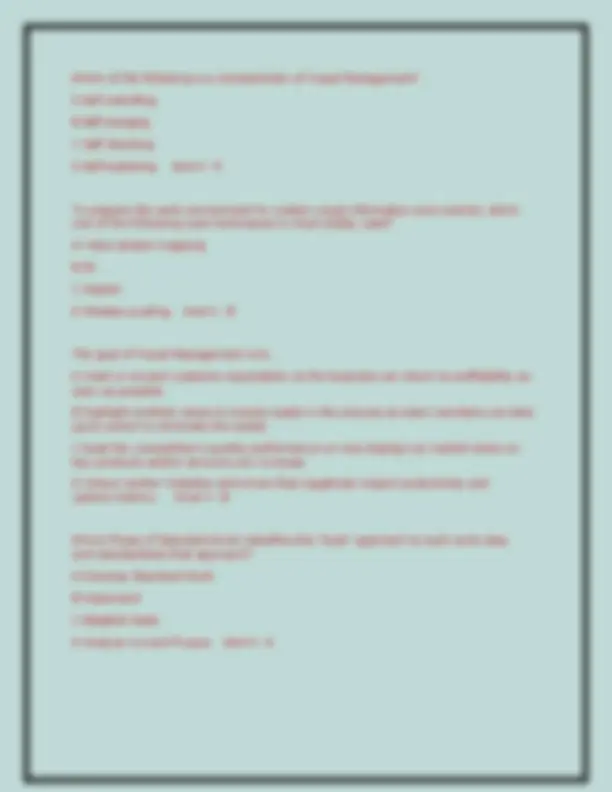
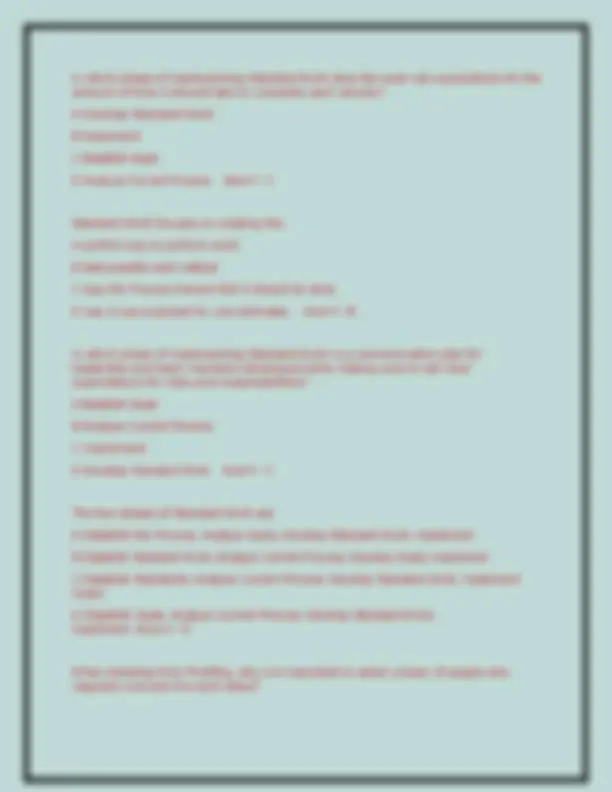
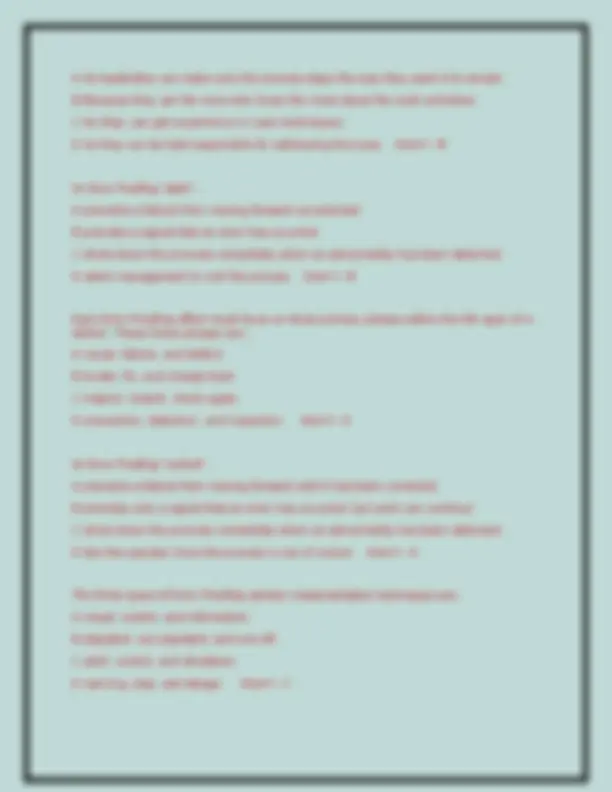
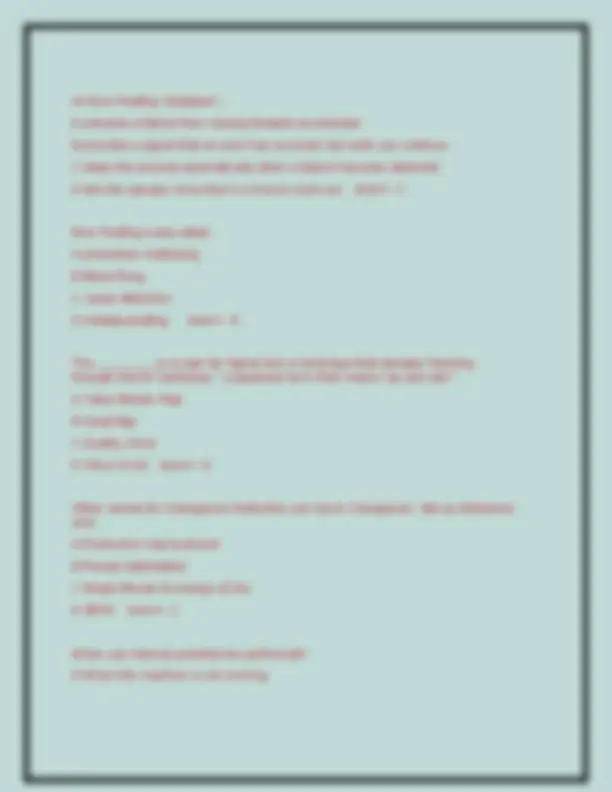
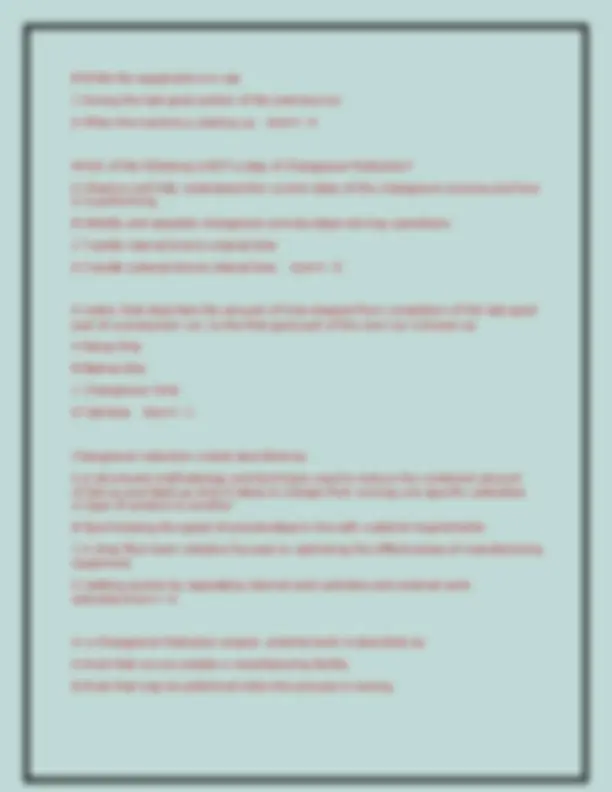
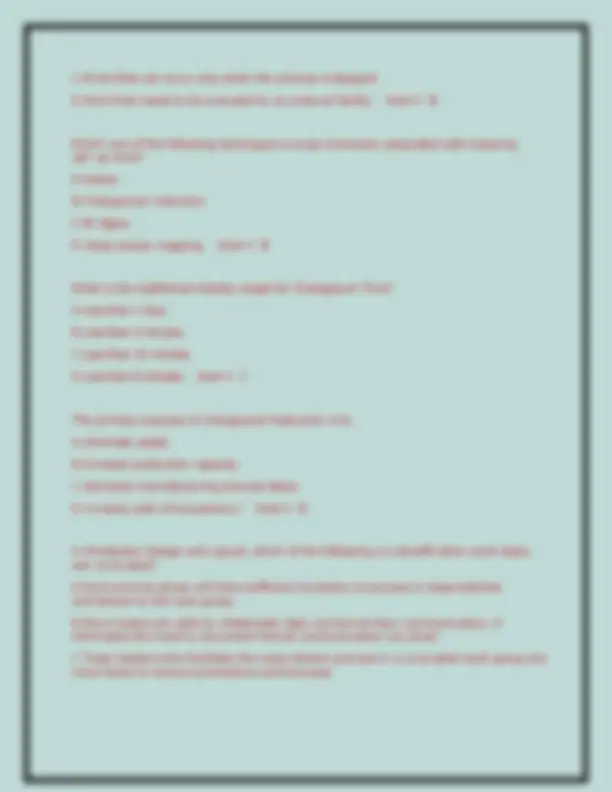
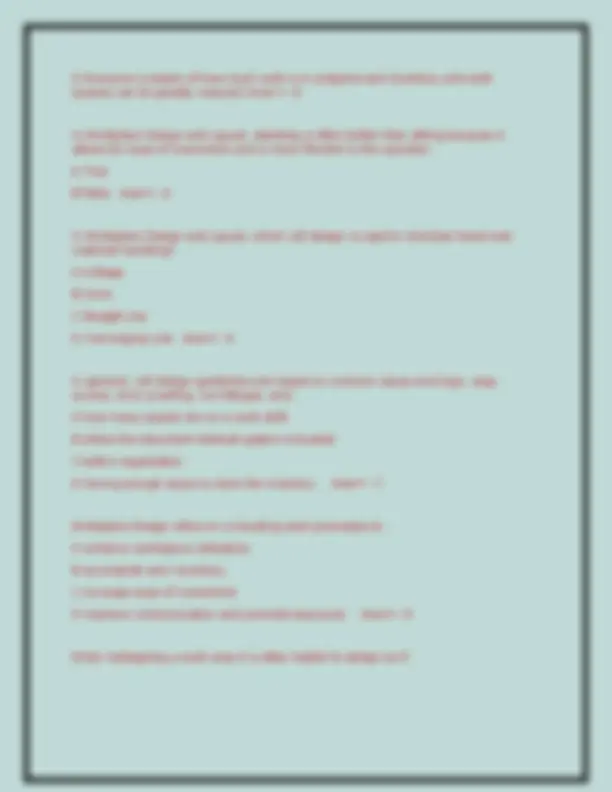
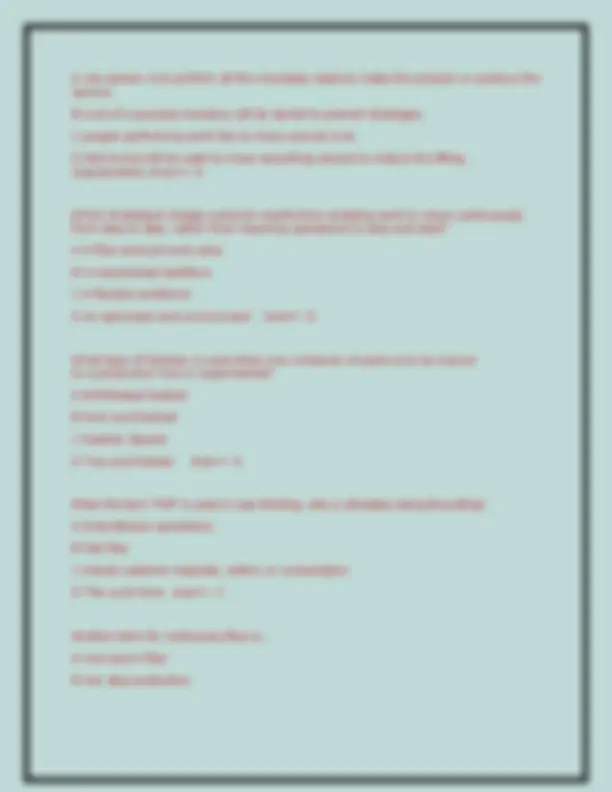
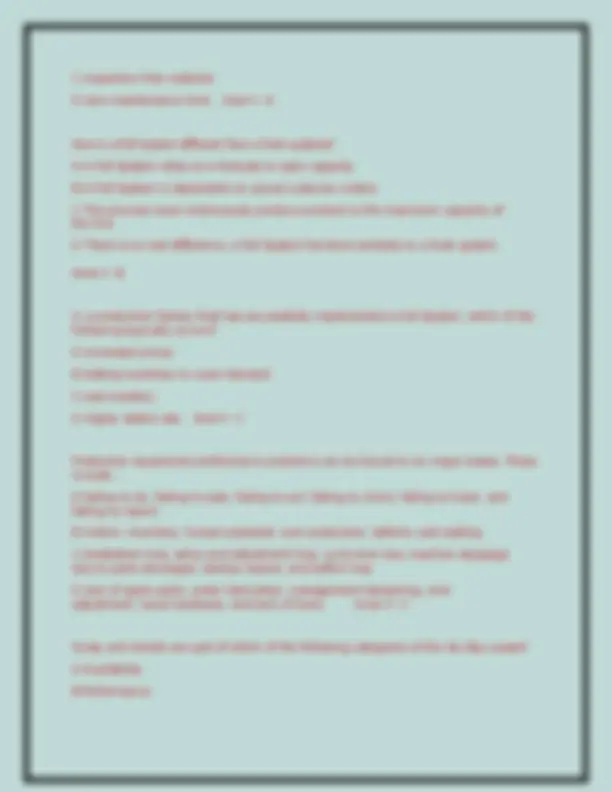
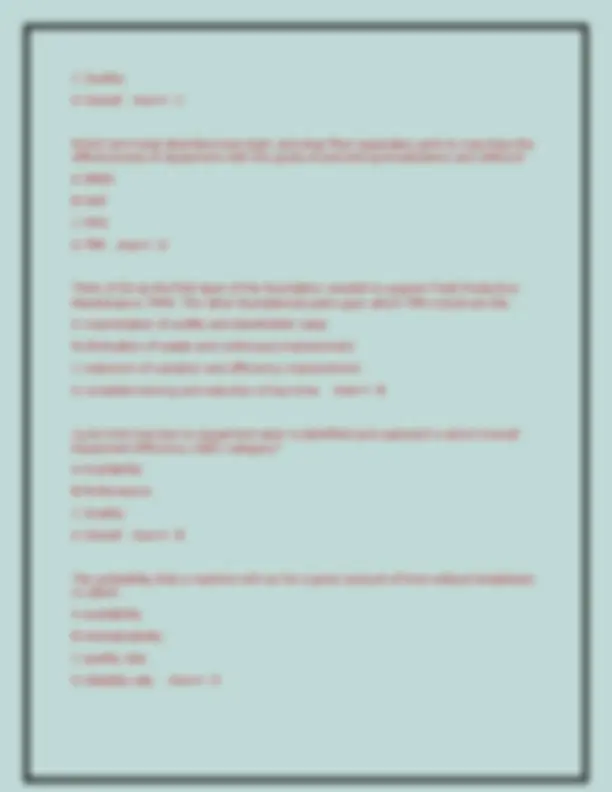
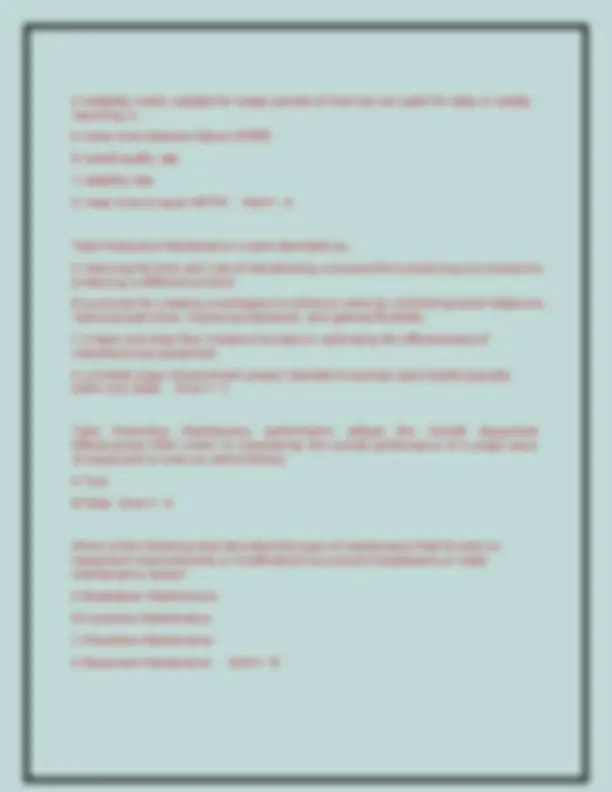
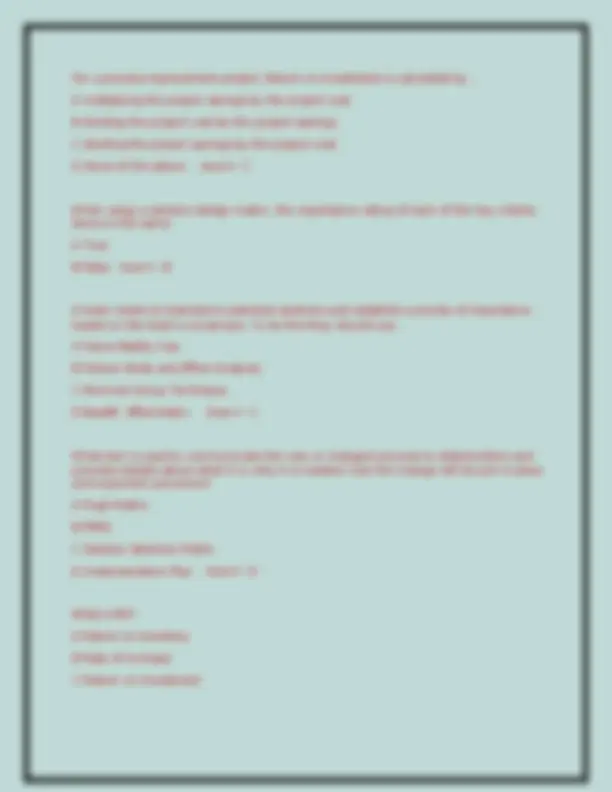
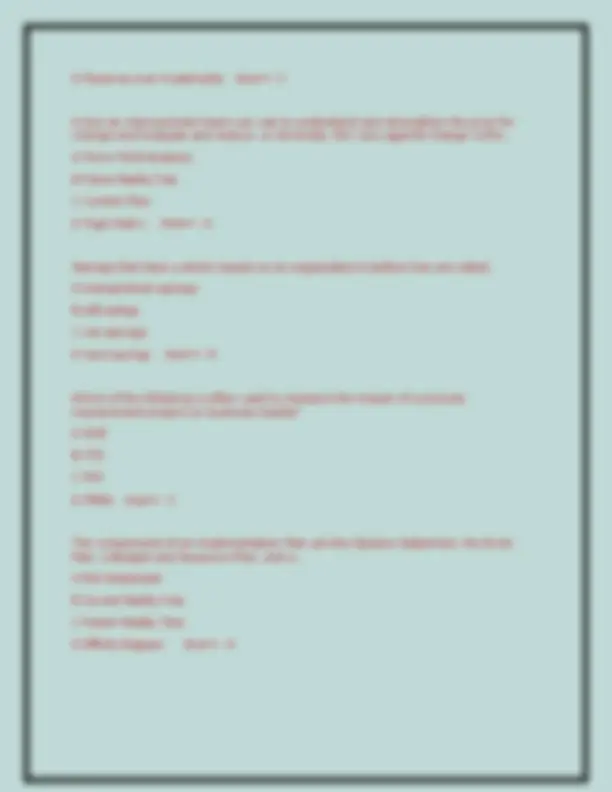
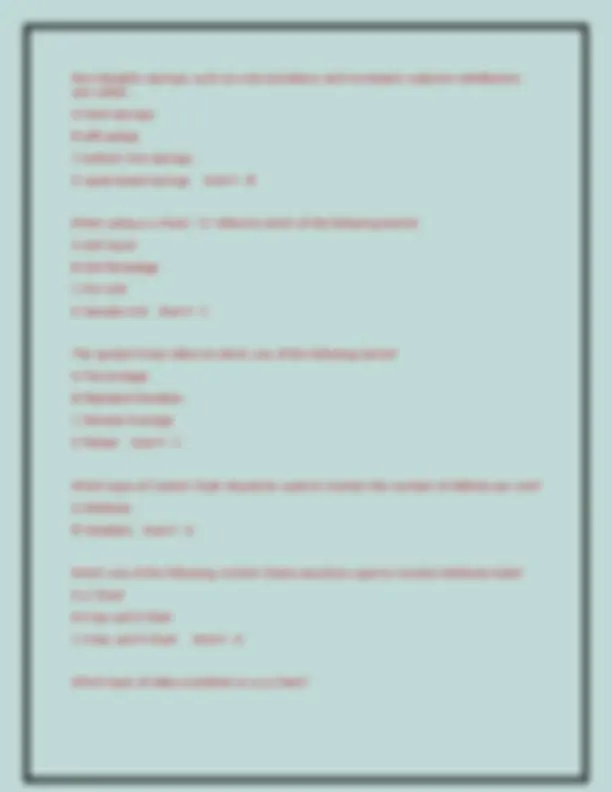
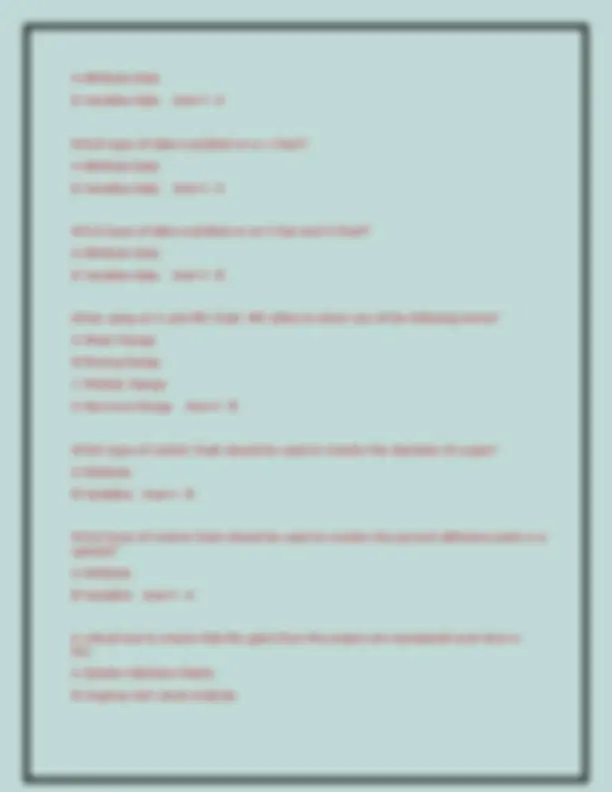
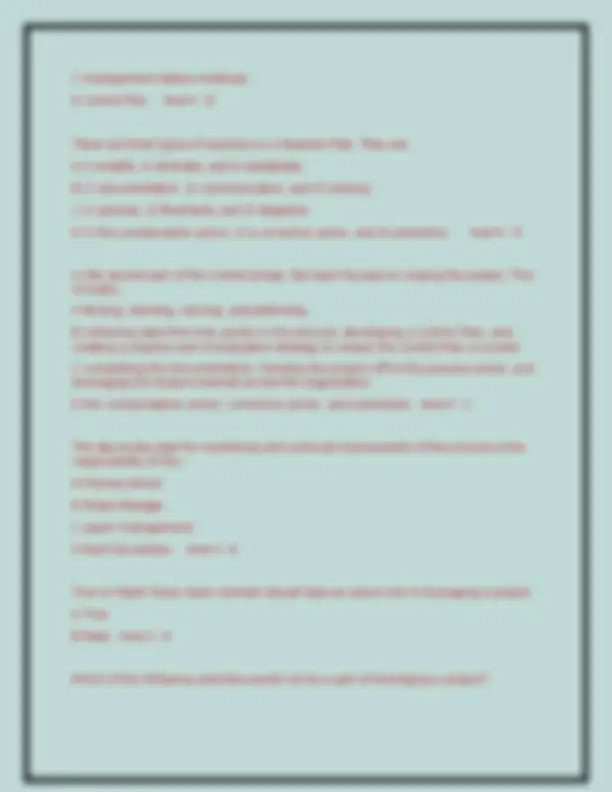
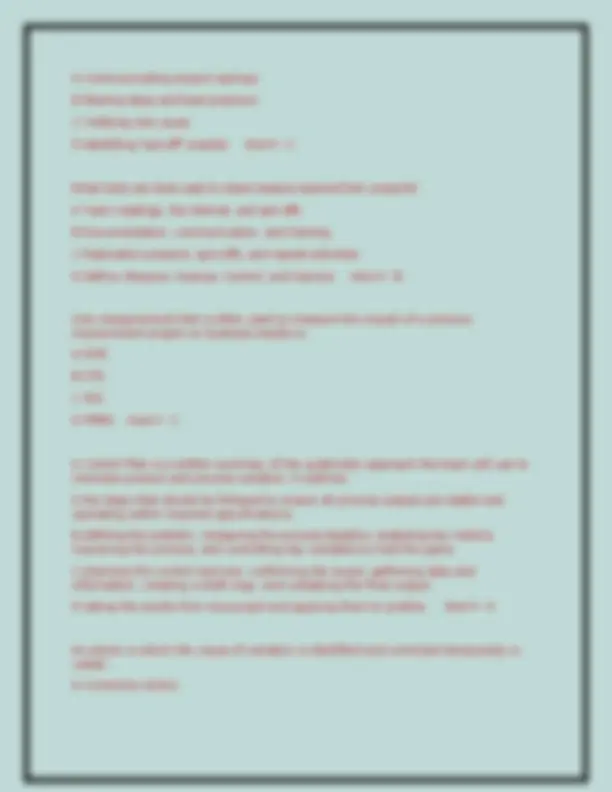



Study with the several resources on Docsity

Earn points by helping other students or get them with a premium plan


Prepare for your exams
Study with the several resources on Docsity

Earn points to download
Earn points by helping other students or get them with a premium plan
Community
Ask the community for help and clear up your study doubts
Discover the best universities in your country according to Docsity users
Free resources
Download our free guides on studying techniques, anxiety management strategies, and thesis advice from Docsity tutors
USAF GREENBELT Exam Questions and Answers 2025.
Typology: Exams
1 / 87

This page cannot be seen from the preview
Don't miss anything!
















































































99% quality represents which Sigma level of quality? A 3. B 3. C 6 D 99 Ans✔✔- B Benefits from reducing variation in a process include improved process capability, decreased costs, and which of the following? A A change of customer requirements B Improvement of the company's culture C A revised project charter D Reduced Defects per Million Opportunities (DPMO) Ans✔✔- B Which of the following statements regarding Six Sigma is correct? A Applies only to manufacturing B Works best in financial processes C Reduces variation and eliminates defects D Focuses only on statistical measurement Ans✔✔- C Which term describes the Six Sigma Methodology used for process improvement?A Process Problem Improvement (PPI) B Define, Measure, Analyze, Improve, Control (DMAIC) C Process Quality Management and Improvement (PQMI) D Design for Six Sigma (DFSS) Ans✔✔- B Which one of the following terms describes the product or service characteristics that are defined by the customer (internal or external) as important to their needs?
A Critical to Quality Variables B Critical to Solution Variables C Quality Management Directives D Critical Operational Variables Ans✔✔- A Which factor should be considered when selecting improvement projects? A Order of project submittal B The impact on the Human Resources department C Alignment with business strategy and goals D How success will be rewarded Ans✔✔- C Six Sigma has been described as a commitment to your customers, a statistical measurement of processes, and which of the following? A A faddish theoretical method of quality management B A way to increase variation C A method to speed up the process D A management framework for thinking about process economics, quality, and customers Ans✔✔- D In which stage of the Six Sigma Methodology are the customer's requirements identified? A Improve B Analyze C Define D Control Ans✔✔- C For a process running at the six sigma level of quality, which one of the following represents the equivalent Defects per Million Opportunities (DPMO) value? A 66, B 10,
B Instituting incoming inspection C Adding more non value-added activities D Reducing waste by using techniques like 5S Ans✔✔- D Which of the following will enable flow? A Supervising people B Implementing a new inventory management system C Eliminating sources of waste D Reducing the number of your suppliers Ans✔✔- C A team is looking at its process from the perspective of the material flow (from the supplier to customer) and information flow (from customer to supplier). What Lean technique are they using? A Root Cause Analysis B 5S C Kaizen Event D Value Stream Mapping Ans✔✔- D Sub-optimization... A occurs when each individual function runs at peak performance without considering other functions or needs. B describes allowing sub-par performance of the supply chain. C considers not improving the entire process across the value stream to meet customer requirements Ans✔✔- A What describes the use of a Product Family Matrix? A Compares steps across products and identify families. B Maps material and information flow for a process while identifying waste. C Measures the rate of pace of the service that is needed to meet customer demand. D Evaluates work flows to look for waste and redundancy. Ans✔✔- A
Which of the following roles often serves as the resource for removing roadblocks and resistance? A Kaizen Team Leader B Deployment Champion C Kaizen Team Members D Lean Leader Ans✔✔- B Who is responsible for the sponsorship and commitment of an organization to the Lean Methodology? A Kaizen Team Leader B Executive Champion C Lean Leader D Project Champion Ans✔✔- B A Product Family refers to a group of products that go through the same or similar process steps, with similar process times and demand rates. How much of the same processing steps are usually shared? A 100% B At least 20% C At least 80% D At least 50% Ans✔✔- C Using Lean thinking and principles reduces waste, identifies value streams, and provides which of the following benefits? A Suppliers and customers align around your vision automatically. B Permits an increase in planned downtime. C Allows the customer to pull product as needed, rather than pushing product to the customer. D Facilitates a reduction in management layers. Ans✔✔- C
B Highlights the cost impact of adding queuing locations within the office area C Used strictly in a manufacturing environment and is not generally utilized in any office or service Lean improvement activity D Categorizes process steps into value-added and non value-added activities Ans✔✔- A When implementing Lean into office and service areas, one of the first steps is to fully understand the current business process. What Lean Six Sigma tool will help Lean practitioners define their specific process? A The general business policy manual B A process map C Takt Time analysis sheet D Utilization of the 5 Whys thought process Ans✔✔- B Which Lean tool is useful in mapping the flow of the information or product through the office process? A SIPOC Diagram B Future State Value Stream Map C Spaghetti Diagram D Swim Lane Diagram Ans✔✔- C In a Value Added Analysis, steps within a process can be defined as Value-added activities, Non value-added activities and.... A Value-multiplying activities. B Value-subtracting activities. C Non-standard activities. D Non value-added (required) activities. Ans✔✔- D Lean transactional processes can be broken down into two primary functions. What are those two functions? A Production, Accounts Payable
B Logistics, Management C Human Resources, Finance D Office, Service Ans✔✔- D Which of the following is NOT among the three key techniques for improving a business transactional process? A Eliminate redundancy such as requirements for multiple reviews and approvals, or duplicate copies B Implementing the Current Value Stream map C Eliminate bureaucracy and non-essential processing, especially if it is not an absolute requirement that can be justified D Complete a Value Added Analysis to determine if work activity adds value to the service provided Ans✔✔- B Which Lean tool enables flow by defining the sequence of steps and the time required to perform them? A Visual Management B Standard Work C 5S D Process Mapping Ans✔✔- B The rope in a theory of constraints system... A controls material release duration in order to keep the buffer at a certain level. B authorizes production. C protects the pace. D sets the pace. Ans✔✔- A A person waiting until the last possible moment before fully applying themselves to completing a task is an example of... A multitasking. B Parkinson's Law.
The buffer in a theory of constraints system... A enforces the pace. B authorizes production. C protects the critical chain. D sets the pace. Ans✔✔- C In the theory of constraints, the ultimate goal is... A to maximize throughput. B to balance the flow of work. C to make money now and in the future. D to minimize inventory and operating expense. Ans✔✔- C The Prerequisite Tree... A is designed to provide step-by-step instructions for implementing a course of action. B is used to verify that a proposed action will produce the desired results. C is used to help implement decisions once the course of action has been determined. D is a graphic representation of a system's goal, critical success factors (CSFs), and the necessary conditions (NCs) for achieving them. Ans✔✔- C In more complex projects, the buffer at the end of each task which protects the critical chain process from variation due to noncritical tasks is the... A feeding buffer. B chain buffer. C rope buffer. D inventory buffer. Ans✔✔- A In a theory of constraints context, policies, rules, measurements, and training are examples of...
A non-physical constraints. B organizational imperatives. C physical constraints. D things needing to be buffered. Ans✔✔- A In a theory of constraints system, throughput of the process is determined by... A the system constraint, or weak link. B the money flowing out of the system. C the money in the system. D customer demand. Ans✔✔- A If the intent of your project is to design and implement a new software package for tracking inventory, the initial Voice of the Customer analysis should be done in which project phase? A Define/Measure B Analyze C Improve D Control Ans✔✔- A A project team is working on a cycle time problem. The team and stakeholders have been established and now the customer must be identified. The customer of the project is NOT likely to be which of the following... A Process owner. B End user. C Next downstream organization. D External customer. Ans✔✔- A A good tool for displaying customer survey data with respect to satisfaction and importance of the question is... A an Affinity Diagram.
D Plan, Determine, Control, Analyze, and Integrate. Ans✔✔- B VOC is... A a weekly process. B a one-time event. C an ongoing process. D a two-month Process. Ans✔✔- C If a customer requires a defect-free product, this is called a... A CTC. B CTD. C CTQ. D CTS. Ans✔✔- C A focus group can be defined as... A one-on-one interviews with many people at the same time. B in-depth qualitative interviews with a small number of carefully selected people. C a representative sample of a population that is selected to complete a written survey. D beginning the process of designing a product or service with the needs and expectations of the customer in mind. Ans✔✔- B Which term best describes this definition? "Articulate the general need to the business while linking the project to an organizational goal or a customer need." A Project Scope B Financial Benefits C Problem Statement D Business Case Ans✔✔- D
The Goal or AIM Statement... A proposes a solution. B focuses on symptoms of the problem. C guides the whole project and keeps the team on task. D may contain a variable or unit of measure not included in the Problem Statement. Ans✔✔- C Where does the Project Charter's Measurable Goal come from? A Business Case B Management Directive C Voice of the Customer (VOC) D Project Plan Ans✔✔- C A project's scope is best determined when using... A customer feedback. B Stakeholder Analysis. C the SIPOC tool.Dthe D MAIC methodology. Ans✔✔- C The roadmap a team uses to manage and control resources, time and money to meet improvement objectives is the... A problem statement. B goal or AIM statement. C project charter. D business case. Ans✔✔- C The amount of improvement a team expects to achieve as a result of the project is defined in the... A problem statement.
D Project Planning Phase. Ans✔✔- B A Kaizen Event is typically executed within what time period? A One day B One week C One month D One quarter Ans✔✔- B One of the elements to include in the scope of a Kaizen Event is... A products and/or services that will most benefit from the Event. B who is going to tell the customer the problem is fixed. C the starting and ending points that will define the Event boundaries. D the reasons the last Kaizen Event failed. Ans✔✔- C Which of the following is a characteristic of successful Kaizen Event? A The Event Week is given two weeks of time to assure everyone's opinion is heard. B The agenda follows a free flow style to allow for everyone's approach to receive equal consideration. C Complaint data is used exclusively as input for what needs to be done. D All team members commit to focus on the Kaizen Event full time for the entire event. Ans✔✔- D The purpose of a Kaizen Event is to... A fix all the problems in the Current Value Stream. B make the process operate at Takt Time. C execute and implement improvements within one week with a "Bias for Action." D decrease costs and increase employee satisfaction. Ans✔✔- C In the Preparation Phase, what is the Kaizen Event team's first task?
A Document and agree upon the business opportunity or gap B Have the floor workers determine the main problem to evaluate C Decide if more than five weeks is required for the project D Determine what needs to be planned and how much it will cost Ans✔✔- A The PLAN step of PDCA can actually be broken down into two activities:identifying and defining the process, product, or service problem, and... A communicating with customers. B selecting leverage metrics. C analyzing the identified problem. D choosing SMEs to assist in checking things out. Ans✔✔- C Identifying and analyzing the problem occurs in which PDCA phase? A Plan B Do C Check D Act Ans✔✔- A Measuring the effectiveness of the test solution and determining if it can be improved occurs in which PDCA phase? A Plan B Do C Check D Act Ans✔✔- C PDCA is often used in which phase of the DMAIC methodology? A Define B Measure C Analyze
What does SIPOC stand for? A Supplier, Information, Process, Outputs, Customers B Supplier, Inputs, Purpose, Outputs, Customers C Scope, Inputs, Process, Outputs, Customers D Supplier, Inputs, Process, Outputs, Customers Ans✔✔- D The Process is ... A the activity that transforms inputs to outputs. B when the process ends. C delivered products or services. D measurable and quantifiable. Ans✔✔- A A process map that provides a lot of information about process performance including detailed handoffs, all the data sources, cycle time information and that highlights rework loops and delays is a... A Level One process map. B Level Two process map. C Level Three process map. D Level Four process map. Ans✔✔- C Clearly defining the boundaries of a process... A helps define customer requirements. B helps prevent "scope creep." C drives automation improvements. D allows for management techniques to take effect. Ans✔✔- B All of the following should be included in a process map except... A available data, such as sigma level, COPQ, and defect rate. B cause and effect relationships.
C the sequence of activities and decision points. D rework loops. Ans✔✔- B In a process map the oval is used to... A denote a process task. B denote a decision point. C identify defects in the process. D indicate a starting or stopping point. Ans✔✔- D When creating a process map, the purpose of a walkthrough is to... A check on the best time to set up interviews. B understand who is working on value-added activities and who is not. C collect audit artifacts and documentation samples to check against the master database. D understand what is actually being done and why it is being done. Ans✔✔- D A tool which shows the inter-relationships of the steps in a process is called a... A Cause & Effect Diagram. B Control Chart. C Pareto Chart. D Process Map. Ans✔✔- D Before beginning the actual task of mapping a process it is important to... A define the number of decision points in the process. B clearly define the boundaries of the process. C identify all the inputs to each process step. D identify which decision points lead to a previous step in the process. Ans✔✔- B In a process map the rectangle is used to...